Handwriting
So, what exactly is handwriting?
EXPLORE Popular Topics
What do all these words mean?
Looking for handwriting tips, handwriting strategies, tools for addressing handwriting needs, or activities to improve handwriting? Here we’re covering how to address handwriting issues through play and multisensory learning.
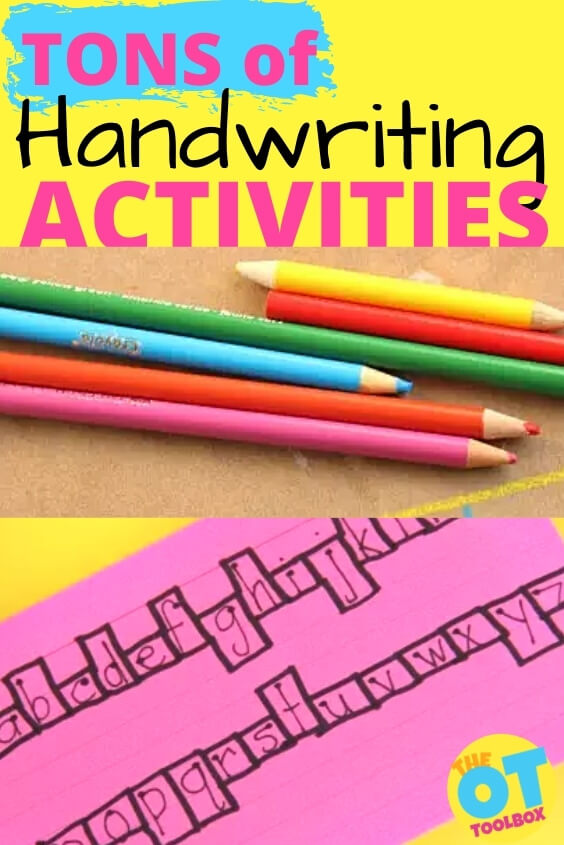
Activities to Improve Handwriting
This is the space to use fun ways to improve handwriting in new writers and children who are not yet writing AND kids who need to correct handwriting problems. This is your one-stop shop for all handwriting activities and writing tips and tools!
Handwriting challenges come in so many different forms! From the child who holds their pencil inefficiently, to the student who was never taught the correct letter formation and now struggles with legible written work, to letter reversals, to poor line awareness and spatial awareness…handwriting is complicated!
Whether you are an occupational therapist working with clients with handwriting challenges, parents of a child struggling with handwriting, or an educator who is struggling to address poor skills…there is something for you.
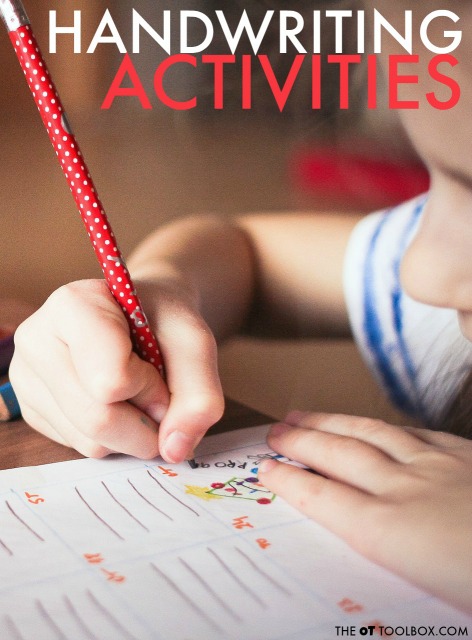
Read on for pencil grasp activities, ideas to help with spacing, letter size, and line awareness. We’ve got cursive resources, and sensory handwriting activities here. Looking for something else? Let me know what kind of handwriting tools you need!
Handwriting
This is a space where we share tips, tricks, and fun ways to improve handwriting in new writers and children who are not yet writing with a pencil. Scroll down to find the tools you need to address handwriting issues, big and small!
But first, here is a fantastic tool that explains everything you need to know about handwriting. There are so many skills kids need for handwriting.
So many therapists, teachers, and parents have downloaded this resource and added it to their handwriting toolbox. When you enter your email, you’ll receive a series of 6 emails based on the underlying areas that make up handwriting. These emails include topics that really play into legibility of written work, like letter formation, line awareness, spatial awareness, and other areas. The email series is a true resource for anyone who works with kids on handwriting.
Get the free handwriting printable pack and email series here.
Starting at the beginning is essential. These three resources are a great starting point for understanding skills needed for handwriting:
- Read about pre-writing skills needed before handwriting.
- Get a better understanding of functional pencil grasp.
- Read about these 5 things therapists want parents to know about pencil grasp.
Creative Handwriting Activities
You don’t always need a pencil to work on handwriting! Working on skills like line use, spacing between letters and words, letter size, and paper orientation can involve fun and creative writing activities…without a pencil! Here are some ideas your kids will LOVE:
If you are looking for easy ways to work on handwriting skills, try our 30 day series.
Letter Formation Activities in Handwriting
Use these creative movement and hands-on learning activities to work on letter formation, writing on lines, and spacing between words and letters. Click around to see all of the ideas with Occupational Therapist recommended tips in each post. Stay tuned, because more activities will be added to this page! motor activities sorted by category.
Working on pencil control in handwriting? Why not start a handwriting club for kids? Kids can work on handwriting skills in a fun way. Here’s how to start a handwriting club kids will WANT to join!
Understand what’s happening behind letter reversals and get some tips and tricks, too.
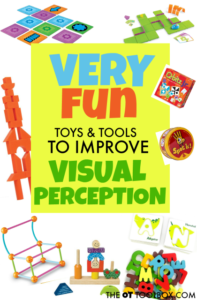

Toys to Improve Visual Perception- In this resource, you’ll find fun toys that act as handwriting tools to improve handwriting skills. Kids will love playing with these toys that build underlying handwriting skills.
Spatial Awareness in Handwriting– Spacing between letters and words is an essential piece of the handwriting puzzle. Adding more white space between words helps with overall legibility, especially when visual perceptual skills or visual motor integration abilities impact sizing, line use, or letter formation.
Teach Carryover of Grasp Patterns with Molded Crayons– Working with small pencils or small crayons improves pencil grasp but also hand strength. Use this molded crayon activity to work on carryover of grasp patterns in written work.
How to Start a Handwriting Club– A handwriting club is a great way to incorporate social skills into handwriting. Kids that write together have fun and build skills together! Use a handwriting club as a way to work on handwriting carryover or small group handwriting practice.
How to Teach a Better Pencil Grasp with Molded Crayons– Small molded crayons are a great tool for building hand strength and endurance in handwriting. Have you ever worked with a child that complained of hand fatigue when writing? Building endurance in fine motor skills begins with play.
The Handwriting Book– This comprehensive handwriting resource was created by pediatric occupational therapists and physical therapists. Use this book as a tool for working on a variety of handwriting skills.
Handwriting Accommodation Strategies– Activities to improve handwriting only go so far. Sometimes accommodations are needed in the classroom or home for a functional handwriting status. Try these tips and strategies.
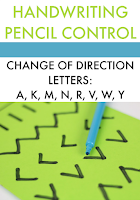

Letter Formation Direction Change in Handwriting- When forming letters, there are many pencil direction changes that impact letter formation. Part of this refers to pencil control, but another consideration is the push and pull of the pencil within the hand. Try this strategy to improve handwriting through a multisensory writing activity.
Core Strength Impacts Handwriting– Did you know that addressing core strength and posture is a valuable strategy that impacts handwriting legibility? This resource covers how and why this happens. Let’s dive into core strength and handwriting.
Handwriting Problems and Strategies to Help– There are many handwriting issues that are common to see in the classroom, clinic, or home. These handwriting red flags can be addressed with simple strategies, tools, and practice. Try incorporating these ideas into practice.
Writing Trays and Handwriting– Writing trays are a fantastic activity to improve handwriting skills. In fact, when used correctly, writing trays offer multisensory letter formation practice that helps to establish a motor plan for letter formation.
Letter Formation Direction Change in Handwriting– When forming letters, there are many pencil direction changes that impact letter formation. Part of this refers to pencil control, but another consideration is the push and pull of the pencil within the hand. Try this strategy to improve handwriting through a multisensory writing activity.
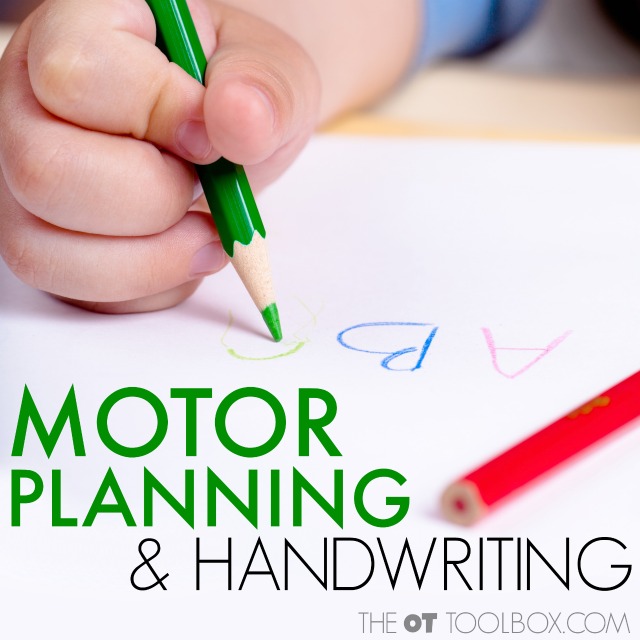

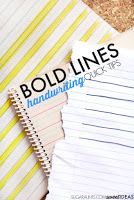

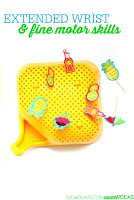

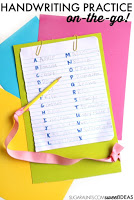

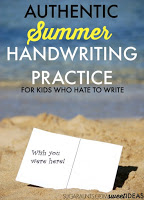

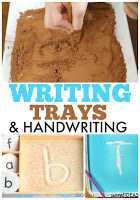

Bold Lines Handwriting Trick for Line Awareness– using a highlighter or a marker is a great way to work on line awareness and help children write on lines. They marker lines add a bold line that allows for a clear writing line and can be a great way to ensure proper letter size for letters that hit the middle line (a, c, e, g, i, j, m, n, o, p, q, r, s, u, v, w, x, y, z).
Extended Wrist Fine Motor Activity– An extended wrist is needed in handwriting, to enable a functional grasp. When children write with a flexed wrist, they are not exhibiting wrist stability and then use the forearm to move the pencil rather than distal muscle features. A neutral or extended wrist allows for proper positioning of the intrinsic and extrinsic muscles to manipulate the pencil while writing.
Additionally, an extended wrist while writing pulls the thumb, middle finger, and pointer finger into a tripod grasp naturally, using tenodesis, due to the musculature of the forearm and hand.
Tenodesis grasp and release occurs as a result of tendons in the forearm and fingers that travel over multiple joints. As a result, the tendons act as a big pulley system allowing the extension of the wrist to pull the fingers into flexion. Tenodesis grasp and release can be used to benefit a grasp on the pencil when writing.
Handwriting On-the-Go Practice Clipboard– Working on handwriting doesn’t need to be boring or happen only at a table. This DIY clipboard activity doubles as a slant board that allows for proper positioning of the wrist and fingers in a functional pencil grasp.
Children can use this handwriting practice clipboard as their personal “desk” to write and move that pencil while out and about, in the car, or in places where a desk may not work out physically.
Natural Handwriting Activities for Summer– Just like the “Summer slide” that happens with math or reading, a summer slide can occur with handwriting! The nice thing is that often times, children are still moving, playing, and building muscle skills during natural summer play experiences.
But, with this resource, you can help kids continue to work on handwriting skills in fun, meaningful, and motivating writing experiences during the Summer months. Activities like writing letters, making a Summer bucket list, writing notes, and making shopping lists are ways to work on letter formation in ways that don’t seem like writing practice.
Motor Planning and Handwriting– When children learn to write, and they practice letter formation, they are establishing a motor plan, or muscle memory for letter formation. This is a powerful tool for functional handwriting, because if we all had to look up each letter’s formation when we write, it would definitely not be functional in the way of writing speed! This resource describes more in detail about the motor planning piece of handwriting skills.
Line Awareness Writing Activities
Writing on the lines can make handwriting go from sloppy to legible. Here you will find resources to help kids write on the lines when copying written work from both a near point and far point such as a the board. These line awareness activities are strategies to improve legibility by addressing writing lines in handwriting.
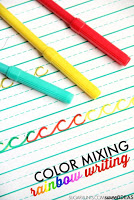

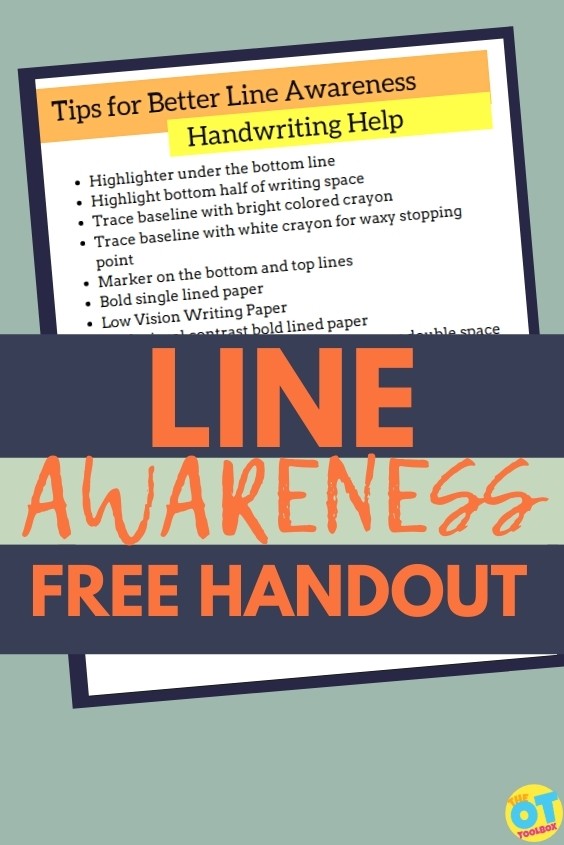

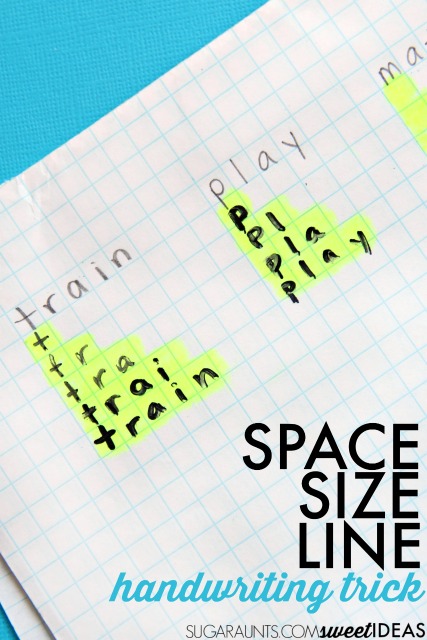

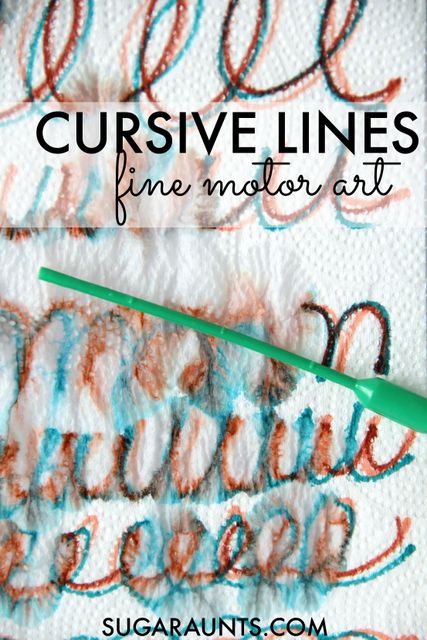

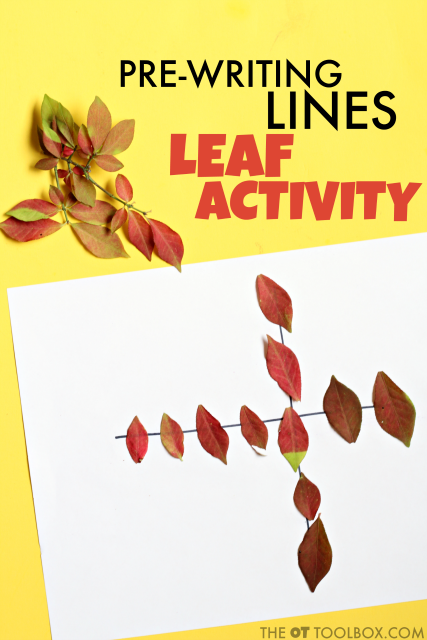

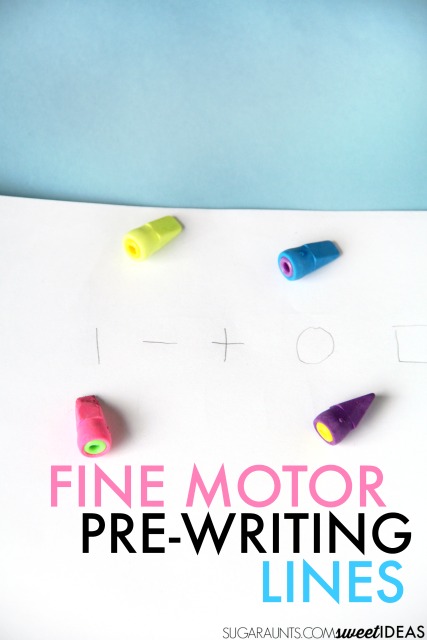

Color Mixing Rainbow Writing Letter Formation Activity– You may have seen rainbow writing activities for young elementary aged children to practice spelling words. However, this rainbow writing activity uses markers and a color-changing multisensory activity to work on pencil control and line awareness. When kids trace over the lines they can see where their marker moves off the lines.
Line Awareness Handout– This free handout covers all things line awareness. Access this handwriting worksheet in our free Handwriting Tips and Tricks series, and use the handout to recommend tactics to work on line awareness.
Line and Spatial Awareness with Graph Paper– Graph paper is a great way to work on spatial awareness, letter sizing, and line awareness. Writing each letter within the boxes enables children to focus on the spatial restraints of lines on a paper. This is a great way to build the perceptual skills to keep a pencil within a writing space such as baselines and middle or top lines when writing.
Cursive Writing Lines Art– This activity was done using cursive letters, but you could work on formation of printed handwriting as well. Make creative art that builds letter formation and line awareness as well. Children can trace over the lines, build fine motor skills, and carryover of line awareness with this fun activity.
Pre-Writing Lines with Leaves– Building line awareness and the directionality of lines is a pre-writing concept that begins with recognizing shapes and then copying those shapes to connect the lines. This carries over to formation of letters and placement on lines within a writing space. This is a fantastic pre-writing activity that uses leaves and multi-sensory learning that will “stick”!
Pre-Writing Lines Fine Motor Activity– Continue the pre-writing lines skills with this resistive fine motor activity that builds a muscle memory of pre-writing lines shapes and forms. This is a great way to build skills in spatial and line awareness.
Tips and Tricks for Writing and Coloring Within Lines– These tips and tricks can be used to help kids with spatial awareness and line awareness in coloring as well as handwriting.
Pre-Writing Handwriting Lines– This pre-writing lines activity gets kids forming lines in a given space, a great activity that transfers to handwriting and forming letters in a space on lines.
Creative Ways to Work on Line Awareness– These line awareness activities and information go into more detail on the implications of line use in handwriting, tips to improve writing lines, and carryover skills.
Sky Ground Writing Method– The sky and ground method of line awareness helps children to visualize the top and bottom line spaces for movement of the pencil to form letters. This DIY writing line paper can be made with just two markers.
Trouble with Margins– Margin awareness is a visual perceptual concept involved in handwriting that isn’t always addressed until you see writing moving across the page, or trouble with writing lists. This activity can help with organization on the page.
How to help with carryover of handwriting skills
Pencil Grasp Activities
Pencil grasp plays a role in handwriting, especially when considering a functional pencil grasp. For more information and tools to promote a functional pencil grasp, be sure to join the Pencil Grasp Challenge.
The activities below help to promote a functional grasp by improving the fine motor skills needed for hand strength, open thumb web space, separation of the sides of the hand, and endurance when writing which all play a role in a functional grasp in handwriting.
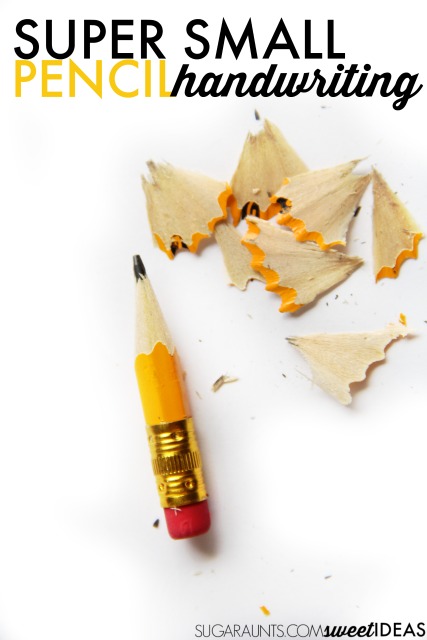

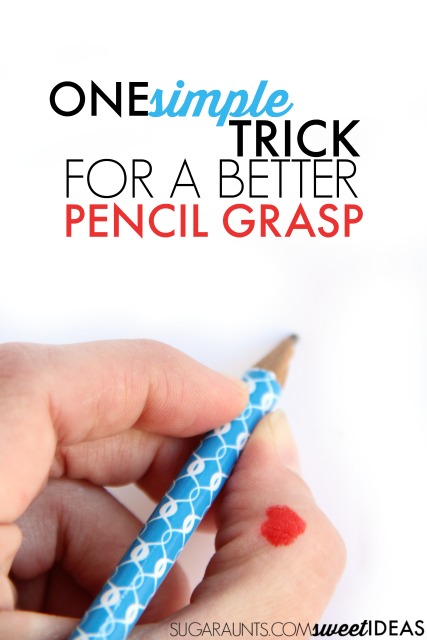

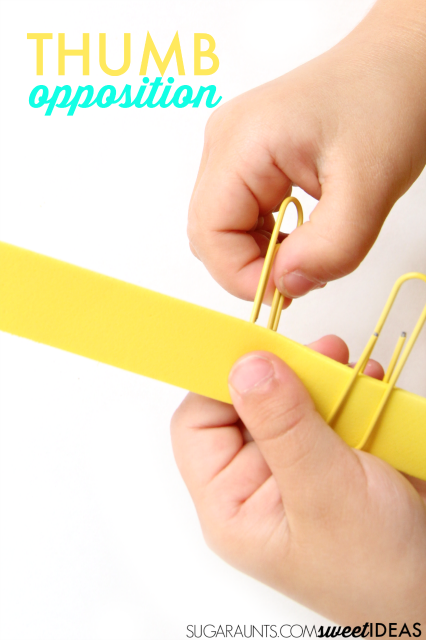

Small Pencil Trick for Helping with Pencil Grasp– Using a small pencil like a golf pencil promotes a more functional pencil grasp because the positioning needed to grasp and move the pencil requires more precise motor movements and pulls the thumb into an open web space. Don’t have a golf pencil? Use the tips in this blog post.
Thumb IP Joint Flexion Pencil Grasp Trick– This pencil grasp trick promotes awareness of an open thumb web space by opening the space between the thumb and the pointer finger and adding rotation to the thumb MP joint into opposition so the pencil is grasped. The precision motor movements of thumb IP flexion allow for precision of grasp. This is a fun activity kids will love!
Thumb Opposition– Thumb opposition allows for precision of grasp and a refined ability to manipulate a pencil when writing. Opposition activities like this one allow for eye-hand coordination development, as well as bilateral coordination, and strengthening of the arch or intrinsic muscles which are necessary for fine motor tasks like writing with endurance.
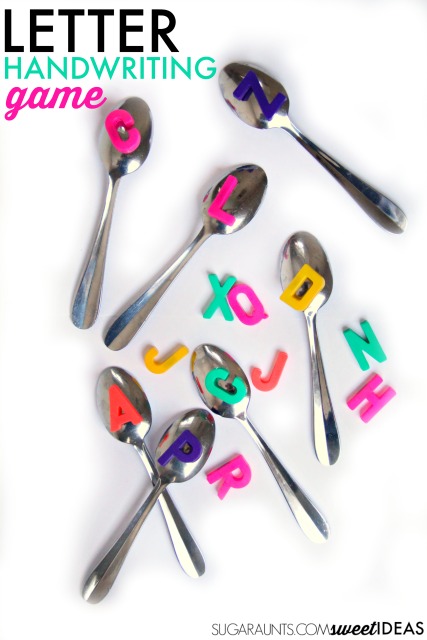

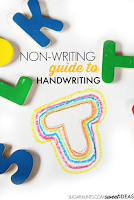

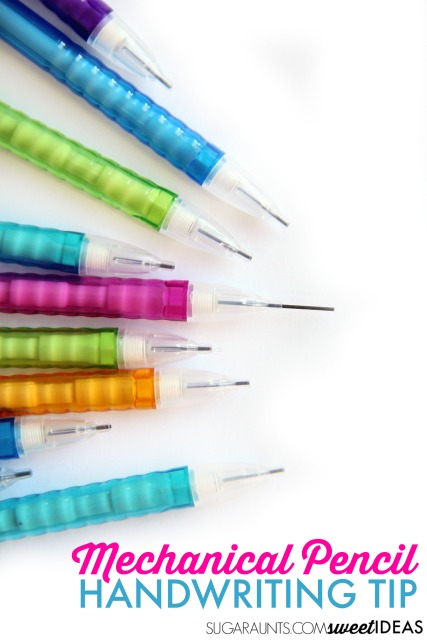

Magnetic Spoons and Handwriting Game– This fine motor activity works on eye-hand coordination and grasp skills, both of which are needed for handwriting!
Mechanical Pencil for Writing Too Dark or Too Light– This activity for handwriting addresses pencil pressure. When kids write too hard that they break the pencil point, addressing proprioception through the pencil is needed. Drawing awareness to this can help and using a mechanical pencil is a great way to work on pencil pressure in writing.
Easy DIY Slant Board and WHY Use a Slant Board? A slant board is a handwriting tool that kids can use to work on accuracy and pencil grasp. This resource explains why using a slant board is important.
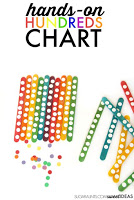

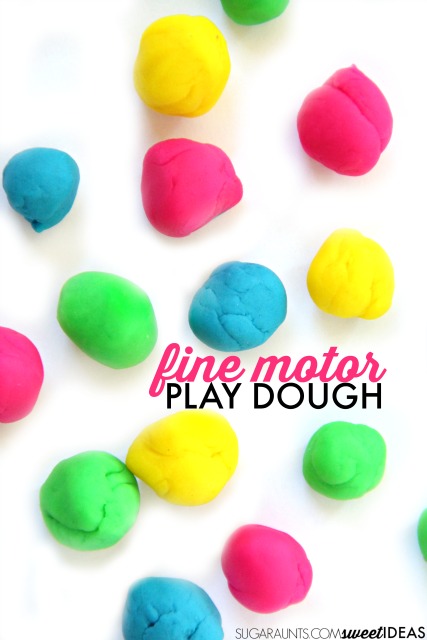

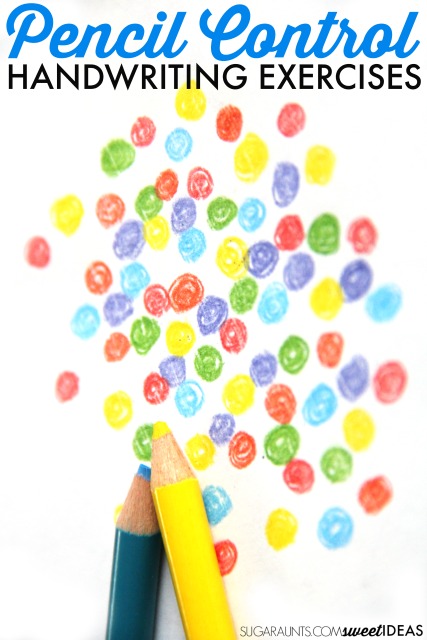

Fine Motor Play Dough Intrinsic Muscle Strength– This intrinsic hand strength activity is a fun way to work on the fine motor skills needed for pencil grasp and endurance when writing.
Pencil Control Exercises– Pencil control is an essential part of handwriting skills that impact letter formation, neatness of letters, and placement on lines or given writing spaces. Use these pencil control exercises to build hand strength and visual motor skills.
Rainbow Hundreds Chart– This rainbow fine motor activity is a great way to work on precision in pencil grasp.
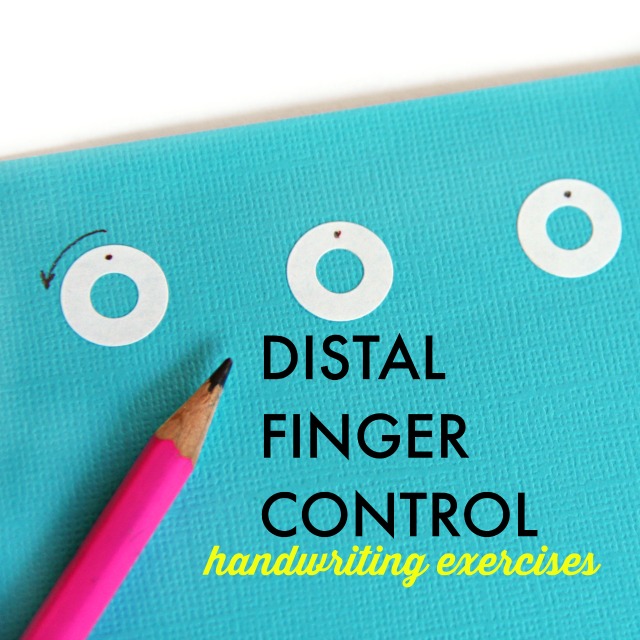



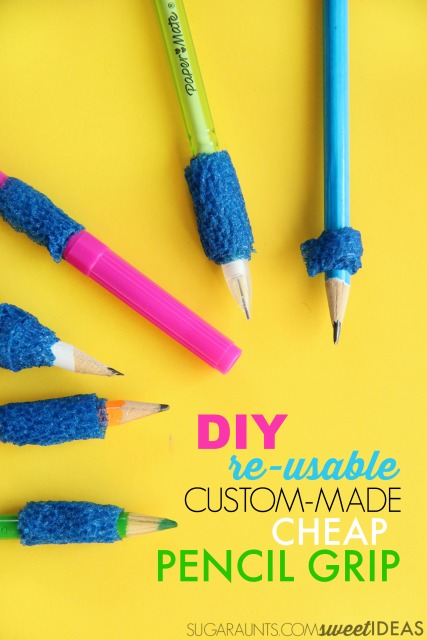

Handwriting Quick Check Self-Assessment List– Use this handwriting self-assessment to check for handwriting skills with writing tasks.
Coban Wrap Pencil Grip– Coban is a therapy tool that many occupational therpaists have in their therapy bag! Use coban to create a DIY pencil grip that molds to the child’s fingertips.
Distal Finger Control Exercises– These distal control exercises promote precision and movement of the pencil in small spaces, using movements needed for writing letters of the alphabet.
Spatial Awareness & Line Awareness Activity Without Handwriting– This spatial awareness activity is a handwriting activity that helps kids to work on bilateral coordination needed to write and hold the paper with their assisting hand. It’s also a great way to work on pencil control, motor planning, and eye-hand coordination, skills needed for handwriting and letter formation!
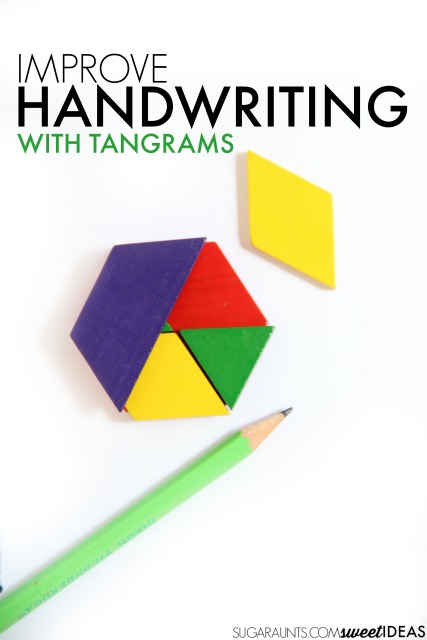

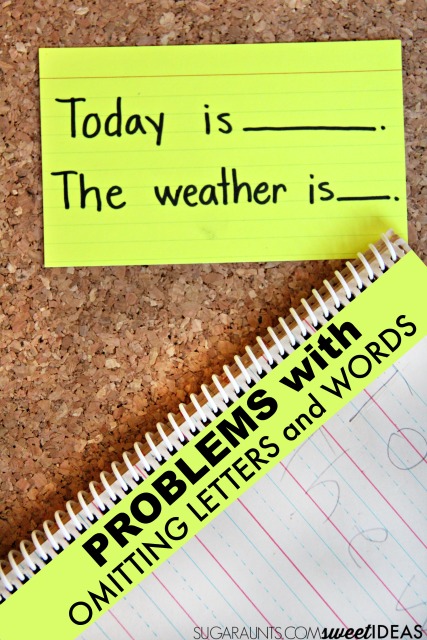

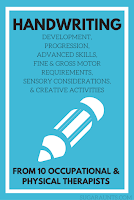

Omitting Letters and Words when Copying– Sometimes kids have trouble with copying written material and omitting letters or words when they copy. This can be a visual perceptual skill that results in errors. This resource covers letter omission in handwriting.
Handwriting and Visual Perception with Tangrams– Working with tangrams is a visual perception activity that helps with spatial awareness and the visual discrimination skills needed in handwriting. Try these tangram activities to help.
A Complete Guide to Handwriting– This blog post includes many links to handwriting activities and resources.
Paper Position Desk Paper Positioner– Positioning paper is a big part of handwriting. This resource includes information on how the paper should be positioned and how to add a visual prompt to promote better paper positioning when writing.
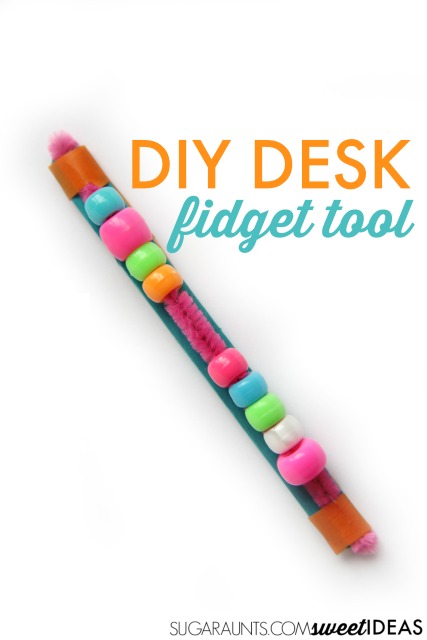

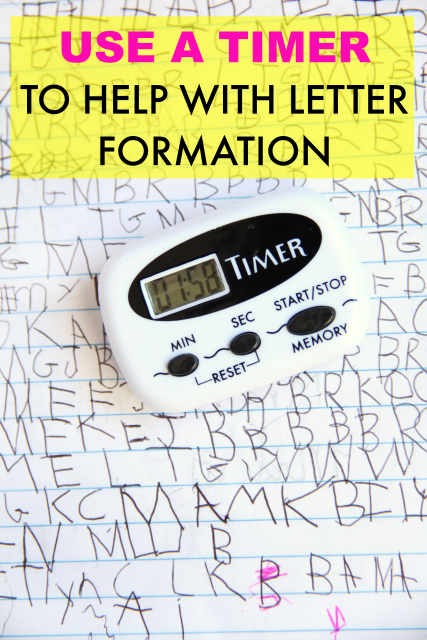

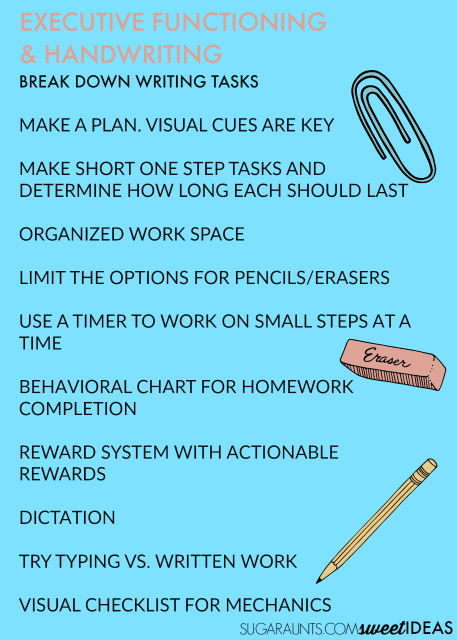

DIY Desk Fidget Tool– Use this DIY desk fidget toy to help with attention during handwriting tasks.
Use a Timer to Help with Letter Formation– Forming letters a problem? Try this timer activity to work on letter formation, speed of handwriting, and accuracy of letter placement on the lines in written work.
Executive Functioning Skills and Handwriting– Executive functioning skills are a part of everything we do, even handwriting! This blog post covers the executive functions needed for letter formation, copying skills, visual attention, and organization on a page.
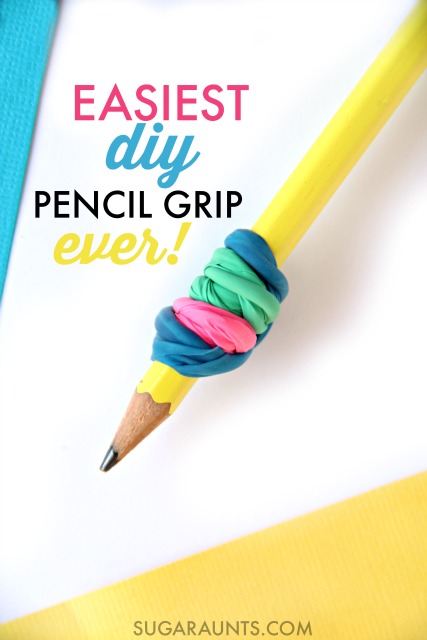

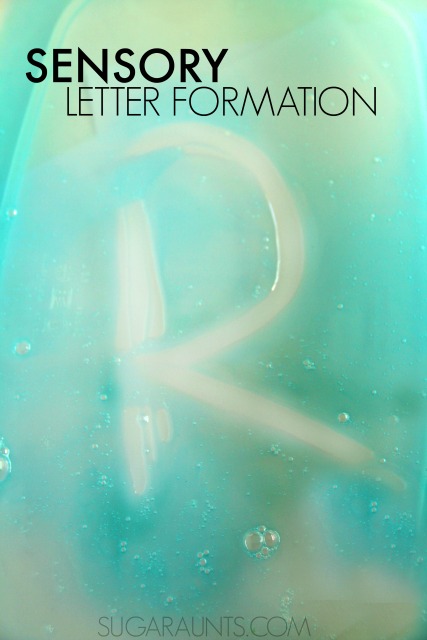


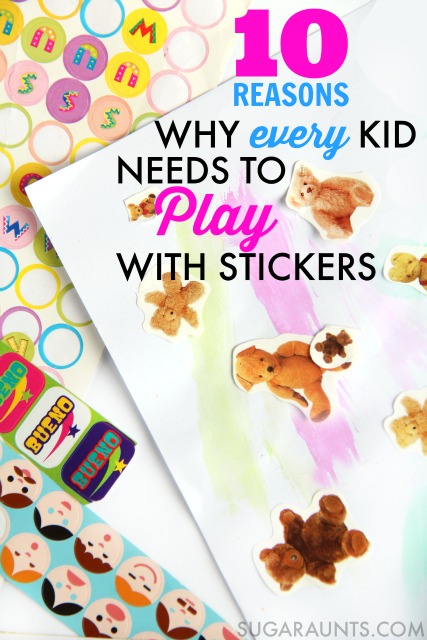

Sensory Letter Formation– This sensory writing activity works on letter formation but allows covers easy tips for handwriting skills. This post includes information on why it’s important to teach lower case letters before upper case letters and how to form letters starting at the top.
Homemade Pencil Grip– Did you know a homemade pencil grip is as easy as using balloons? This pencil grip draws the distal fingers to the tips of the pencil and is good for kids that need a visual and physical cue to hold the pencil at the end.
Benefits of Stickers in Occupational Therapy– There are many benefits to playing with stickers and handwriting skills are part of that especially when you take into consideration all of the fine motor skills that impact a functional pencil grasp.
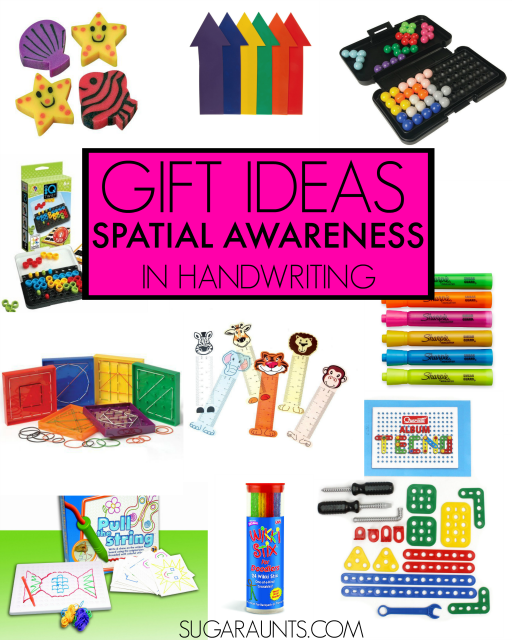

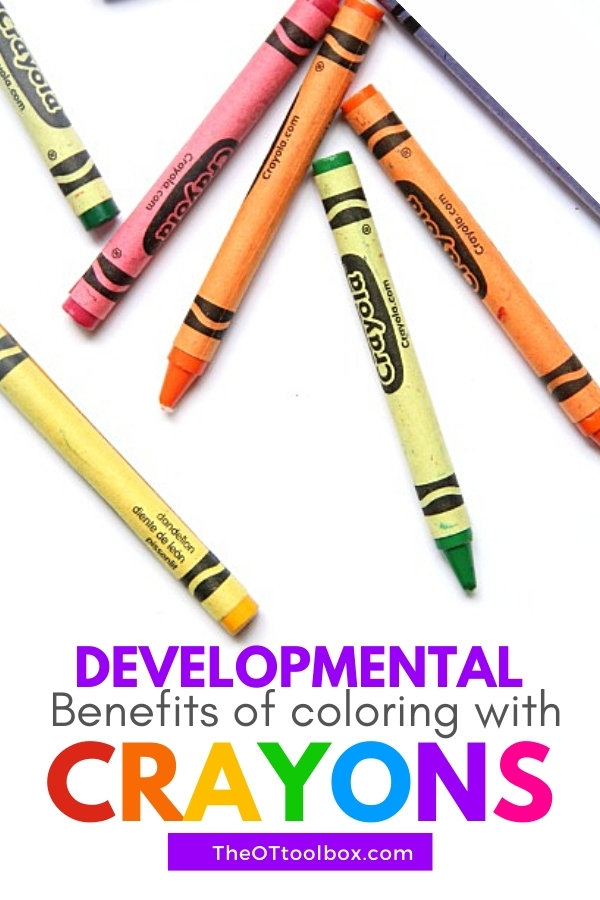

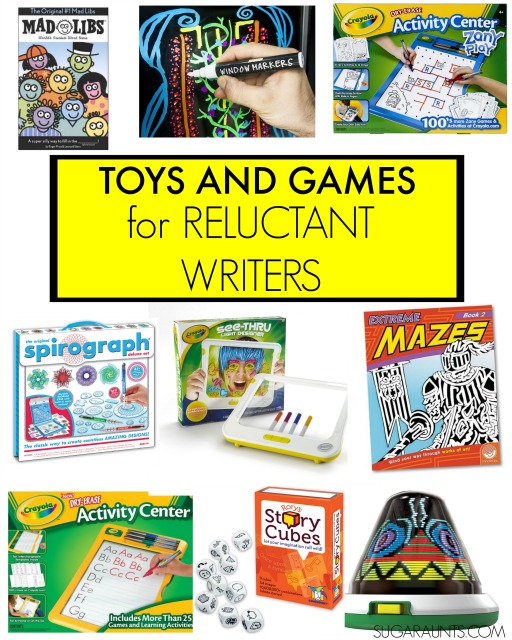

Toys and Games for Reluctant Writers– Sometimes kids are reluctant writers because they HATE to write or because writing is HARD. These activities and ideas for reluctant writers many handwriting fun and meaningful…and motivating!
The Benefits of Coloring– There are many benefits to coloring that impact handwriting like hand strength and controlled motor movements of the hands.
Gift Ideas for Spatial Awareness– These toys and tools are fun games to work on spatial awareness in handwriting.
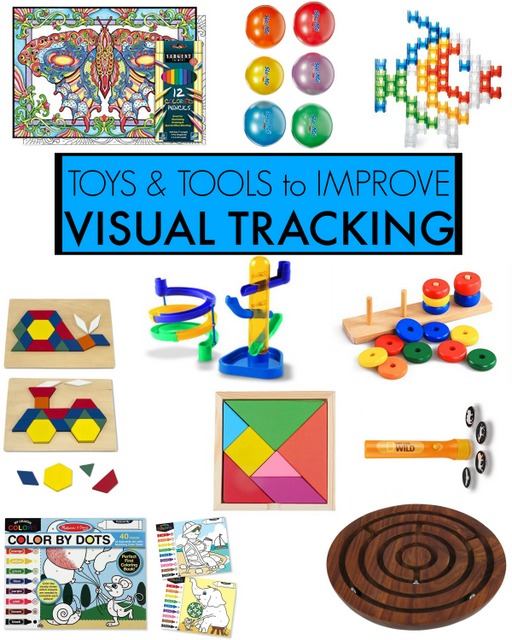

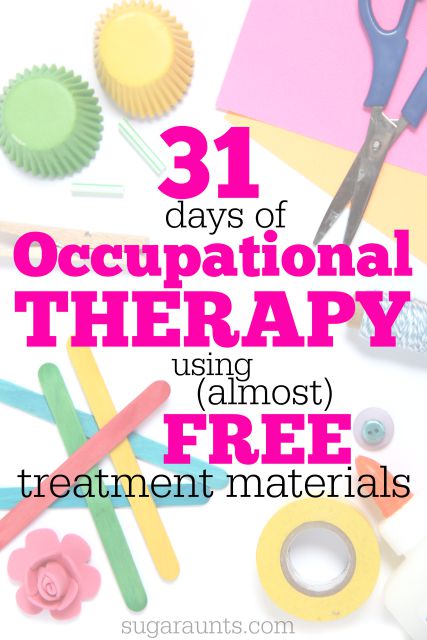

31 Days of Occupational Therapy with Free or Inexpensive Treatment Materials– So much about the tools that therapists use can be from everyday functional items or materials found around the home. Others are recycled items that are used to improve functional skills or the underlying skills that impact handwriting and pencil grasp.
Toys and Tools to Improve Visual Tracking– Visual tracking skills are needed for reading and writing. These games and toys help to improve visual tracking skills in written work.
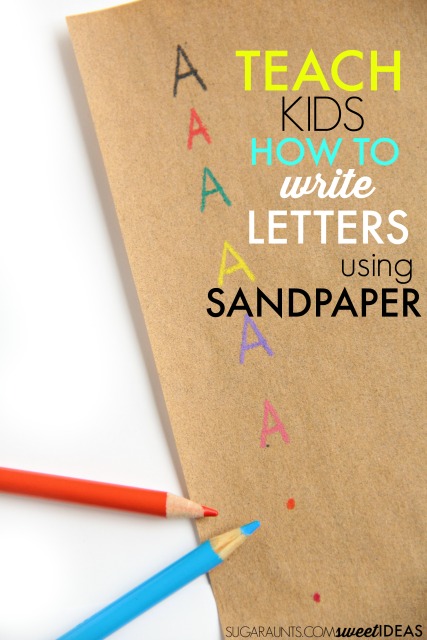

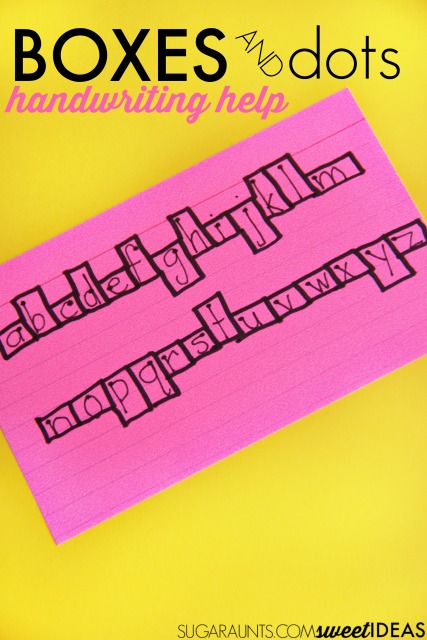

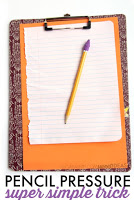

Pencil Pressure Simple Handwriting Trick– Pencil pressure is a common handwriting problem for many children. Use this easy activity using a foam sheet to work on the proprioceptive skills needed for appropriate pencil pressure.
Sandpaper Letter Formation Trick– One handwriting activity is using sandpaper to work on letter formation and building the muscle memory skills needed for forming letters with automaticity. This activity for letter formation is great for new writers or fixing letter formation mistakes.
Boxes and Dots Handwriting Method– Writing with appropriate letter size can impact formation and legibility. This box and dot method can help with forming letters correctly, as well as addressing letter reversals.
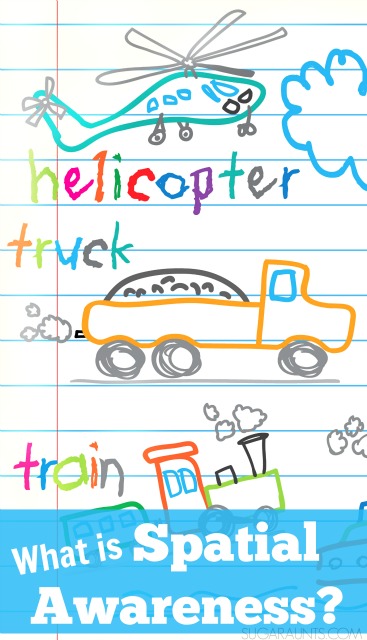

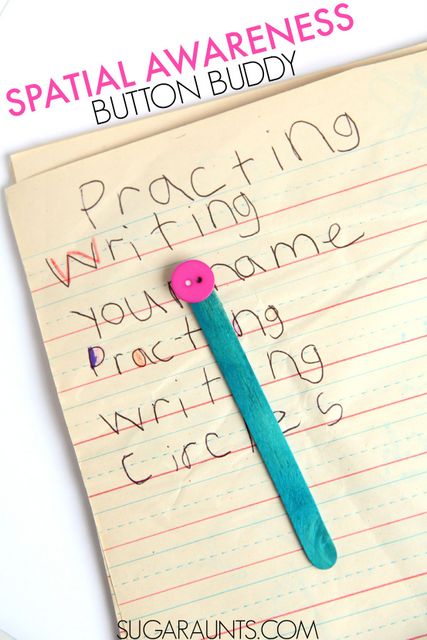

Easy Trick for Tripod Pencil Grasp– This pencil grasp trick involves hiding a small object in the palm of the hand to work on separation of the sides of the hand and tripod grasp in handwriting.
What is Visual Spacing– Spatial awareness in handwriting is an important part of legibility. Use this button spacing tool to work on spacing between letters and words for better legibility.
Visual Tracking Tips and Tools– This visual tracking tips and tools address the visual processing skills needed for writing, copying material from a near point, copying words or sentences from a distant point like a chalkboard, and the visual shift, visual memory, and visual tracking skills needed to know where the writer left off.
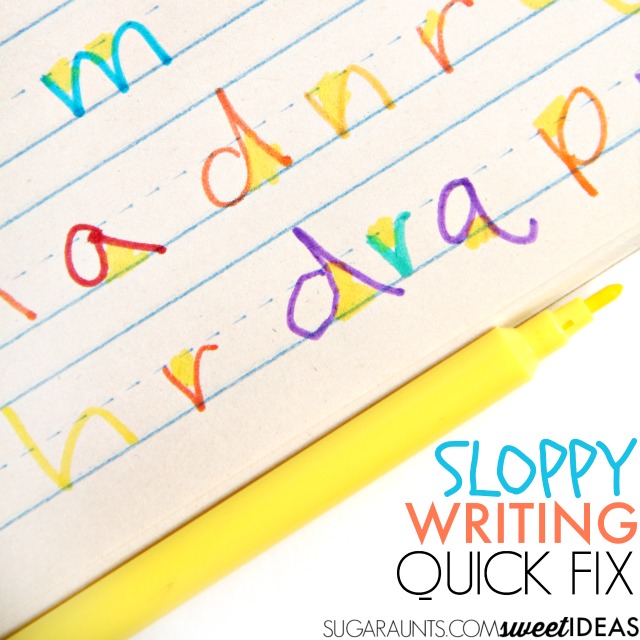

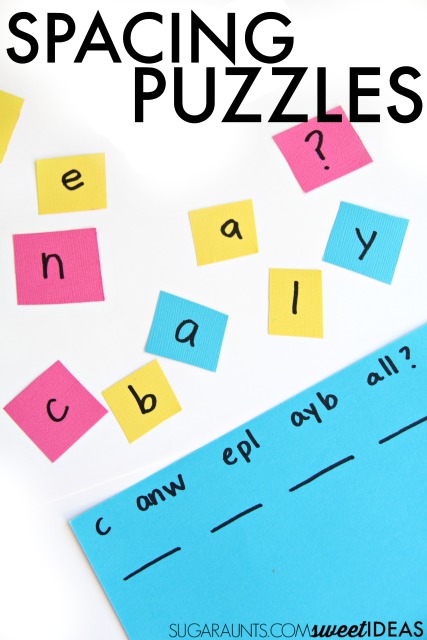

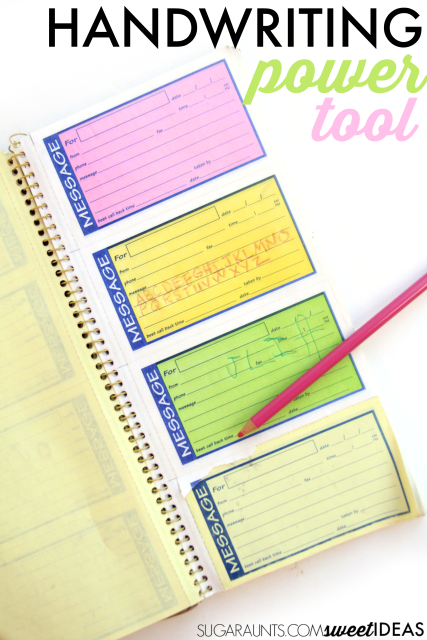

Handwriting Puzzles Spacing Awareness Activity– These spacing puzzles are a fun way to work on the visual perceptual skills needed for writing words and letters with spacing so that kids can read their own handwriting. This is a great self-check activity for kids.
Easy Trick for Helping with Letter Formation and Sloppy Writing– This activity for handwriting skills works on letter formation and re-trace of pencil lines when writing. Kids can self-check their handwriting with this fun self-assessment activity and then carryover the letter formation skills.
Transfer Paper for Spacing, Line Awareness, Letter Formation, Pencil Pressure– Did you know you can use transfer paper for a fun handwriting activity that works on letter formation and handwriting skills.
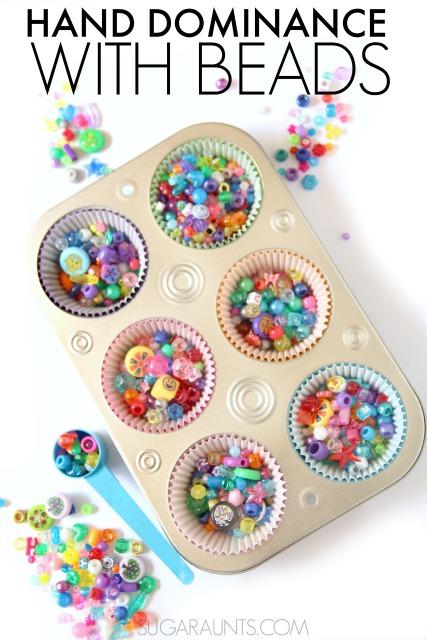

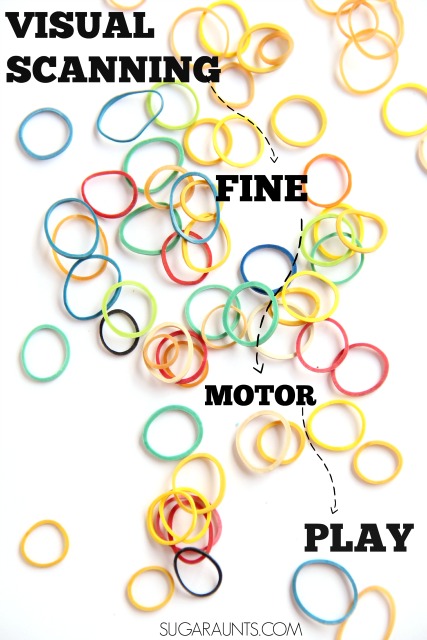

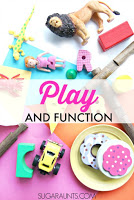

Hand Dominance and Fine Motor with Scooping and Pouring– This handwriting activity addresses bilateral coordination skills and crossing midline needed for holding and positioning paper when writing with a pencil.
Visual Scanning Fine Motor Fidget Toy– This visual scanning activity is a great way to work on the visual skills needed for handwriting and copying written material.
Functional Play Ideas with Every Day Toys– Use toys found around the home to work on handwriting skills, fine motor skills, visual perceptual skills, and visual motor skills.
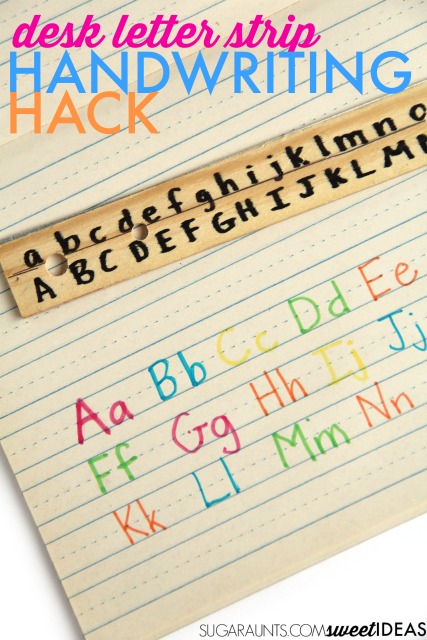

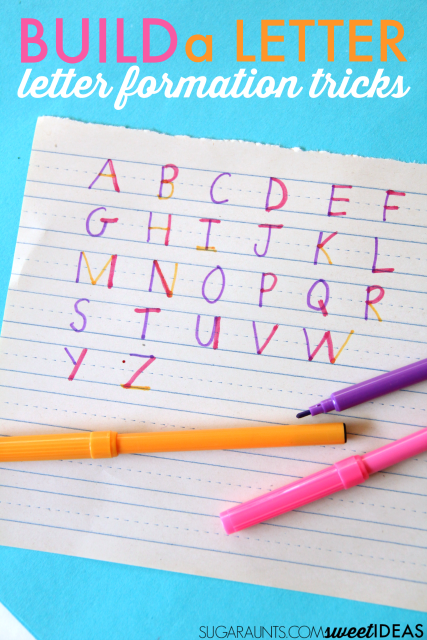

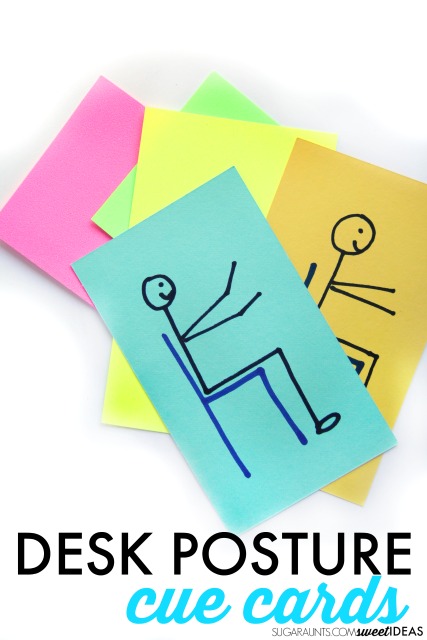

DIY Letter Strip Desk Ruler– Make a letter strip for the desktop that can go right into a pencil box or inside the desk. This DIY letter strip helps with letter formation and visual memory skills needed for helping kids copy letters and write letters in their assignments.
Letter Construction Method for Accurate Letter Formation– This letter construction activity works on proper letter formation and sequencing of letter formation so that kids start letters at the top and move to correct formation of parts. The visual cues are great for kids.
Desk Positioning and Posture While Writing– These desk posture tips cover the correct positioning needed for writing when sitting at a desk.
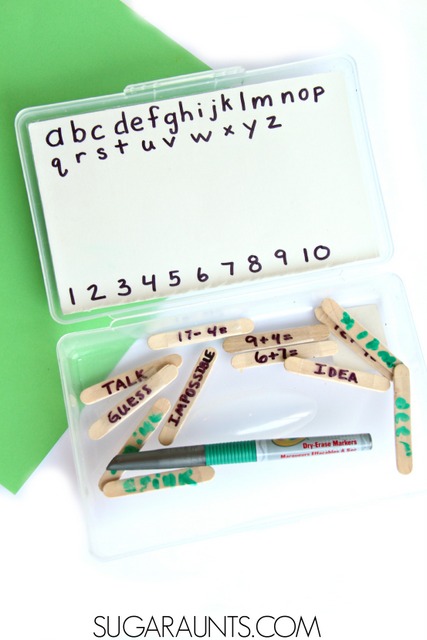

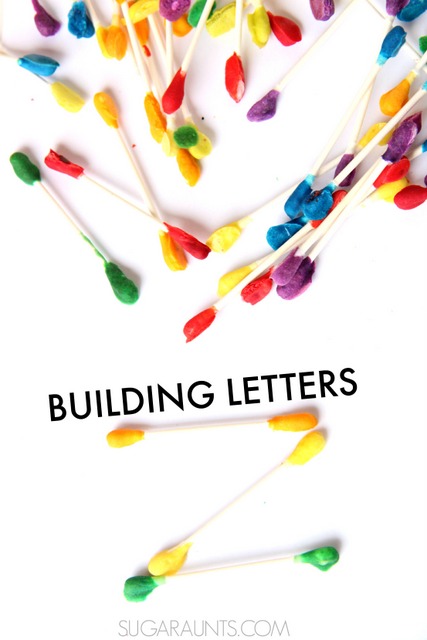

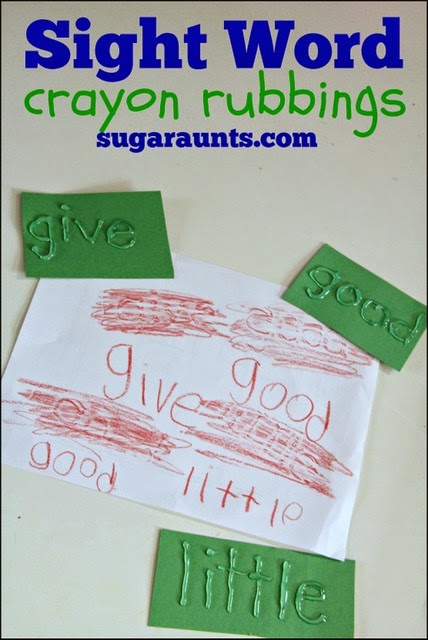

DIY Dry Erase Board Handwriting Travel Kit– Make this DIY dry erase board to work on handwriting while in a car or on the go. It’s a pencil box activity that kids will love!
Building Letters Worksheets– Use cotton swabs as a sensory handwriting activity for working on forming letters. This is a fun way to work on letter writing with kids!
Hot Glue Letters & Words– Multisensory handwriting activities like this hot glue gun letters help with forming letters with a crayon rubbing activity. This is a great activity for bilateral coordination and fine motor skills, too.


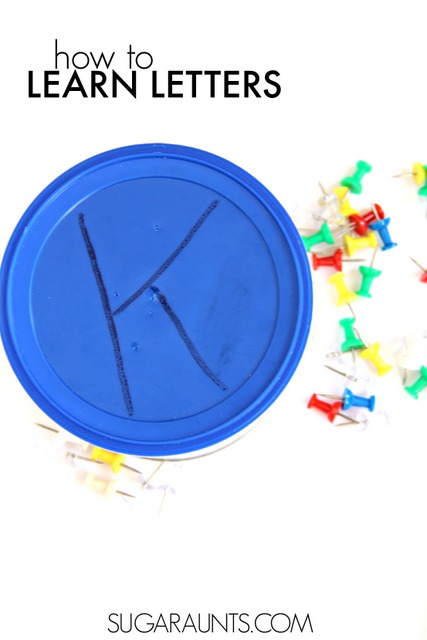

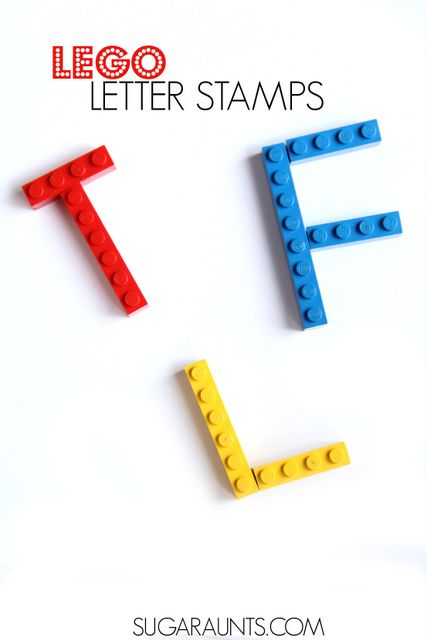

Letter Formation Resistive Surface– Use this activity for handwriting skills using a resistive surface with an item you probably already have in your home.
Letter Formation with Push Pins in a Can– Work on letter formation using push pins in a lid for a resistive surface that promotes a tripod grasp.
Lego Letters– Build letters using LEGO pieces that help with tripod grasp, hand strength, bilateral coordination, and visual motor skills.
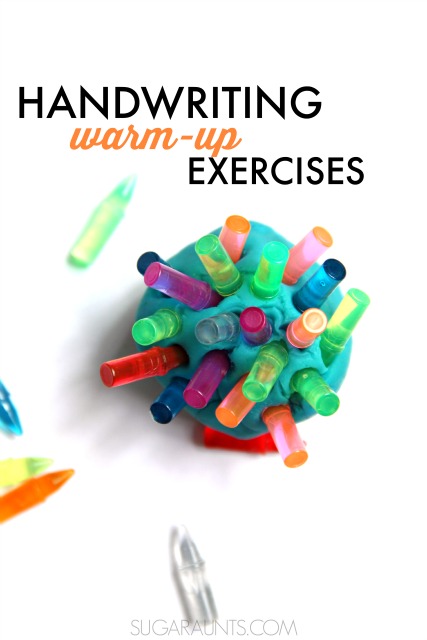

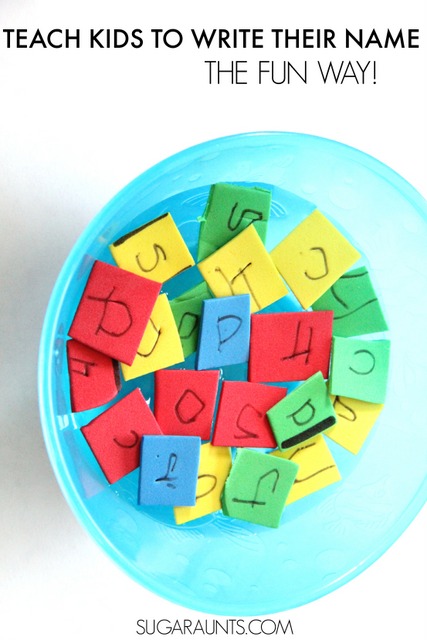

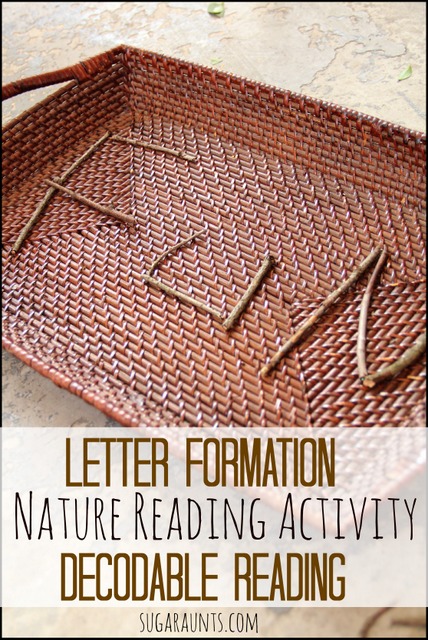

Handwriting Warm Up Exercises– These handwriting warm-up exercises are a great way to build hand strength and get the hands warmed up for a writing task.
Handwriting on Foam Craft Sticks– Writing on foam sheets adds a proprioceptive resistance feedback for letter formation. This writing activity can help with teaching kids letter formation in proper sequence.
Nature Letters– Work on forming letters with sticks, leaves, and petals. This is a fun letter formation activity that incorporates visual discrimination, figure ground skills, and other visual perceptual skills.
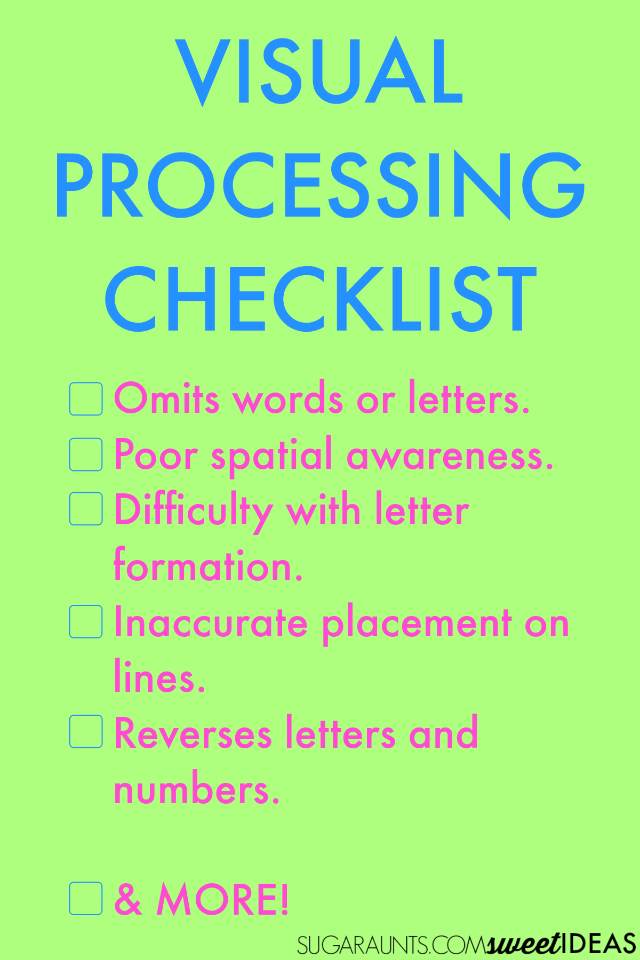

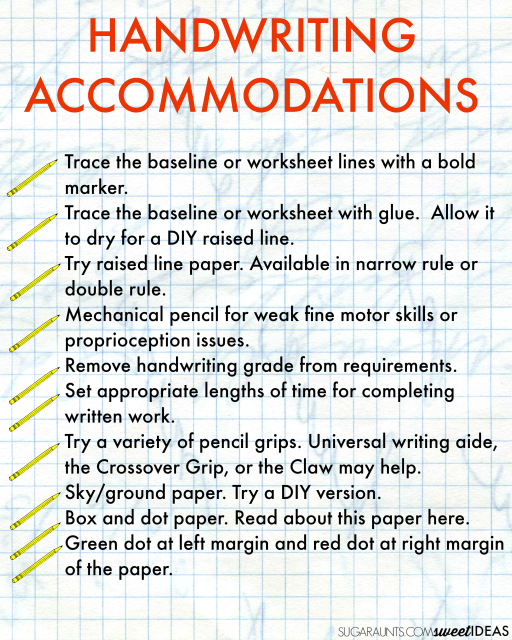

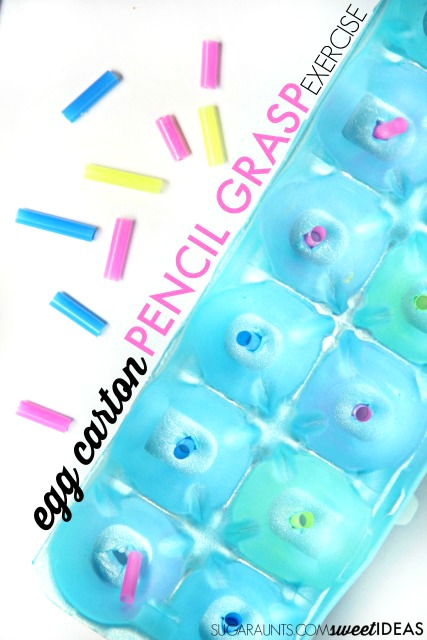

Visual Processing Checklist for Handwriting– Visual processing is a huge piece of handwriting. Consider all of the visual processing skills needed to copy and write letters and words: visual discrimination, figure ground, visual closure, visual attention, visual memory, eye-hand coordination, visual motor integration, and more!
Handwriting Accommodations for the Classroom– Use these suggestions for helping children with handwriting in the classroom.
Pencil Grasp with an Egg Carton– This handwriting activity uses just an egg carton to build the intrinsic muscle strength needed for a tripod grasp.
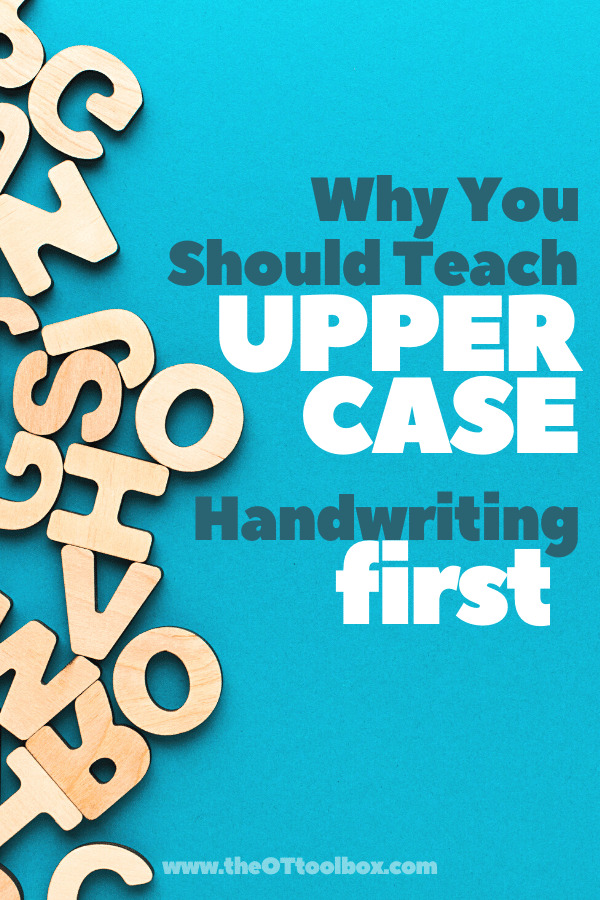

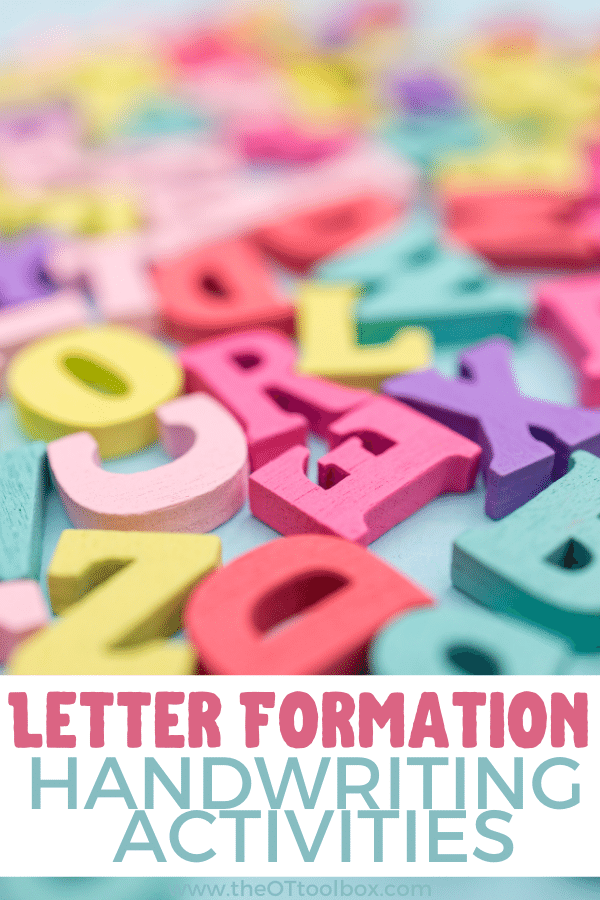

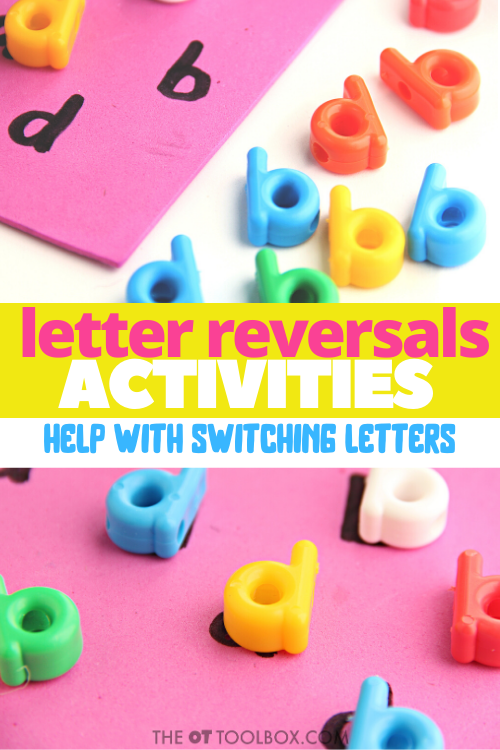

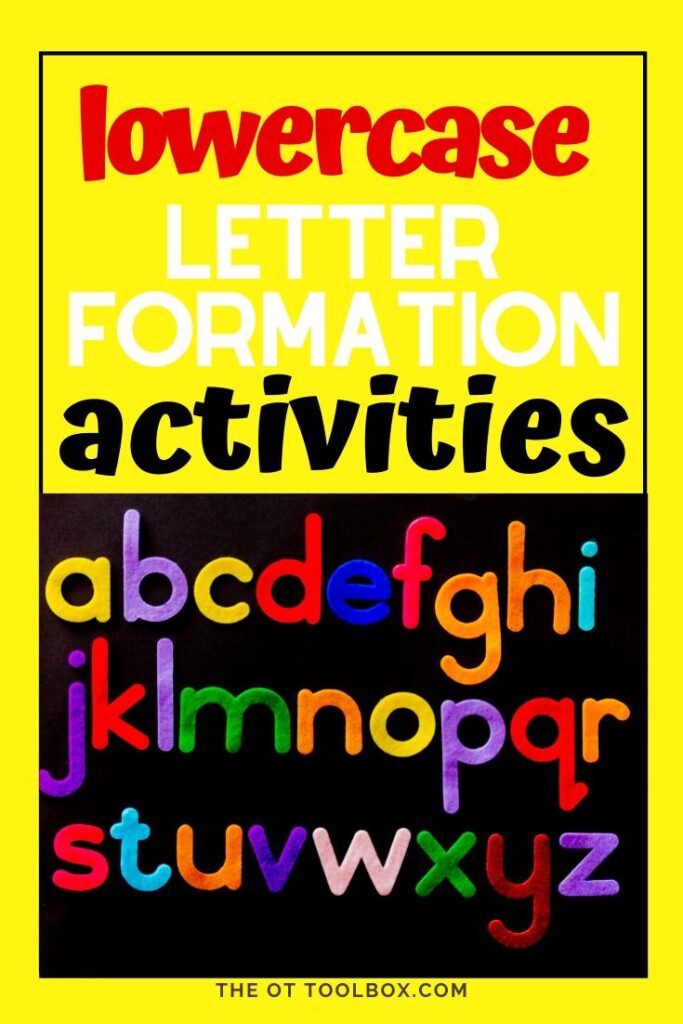

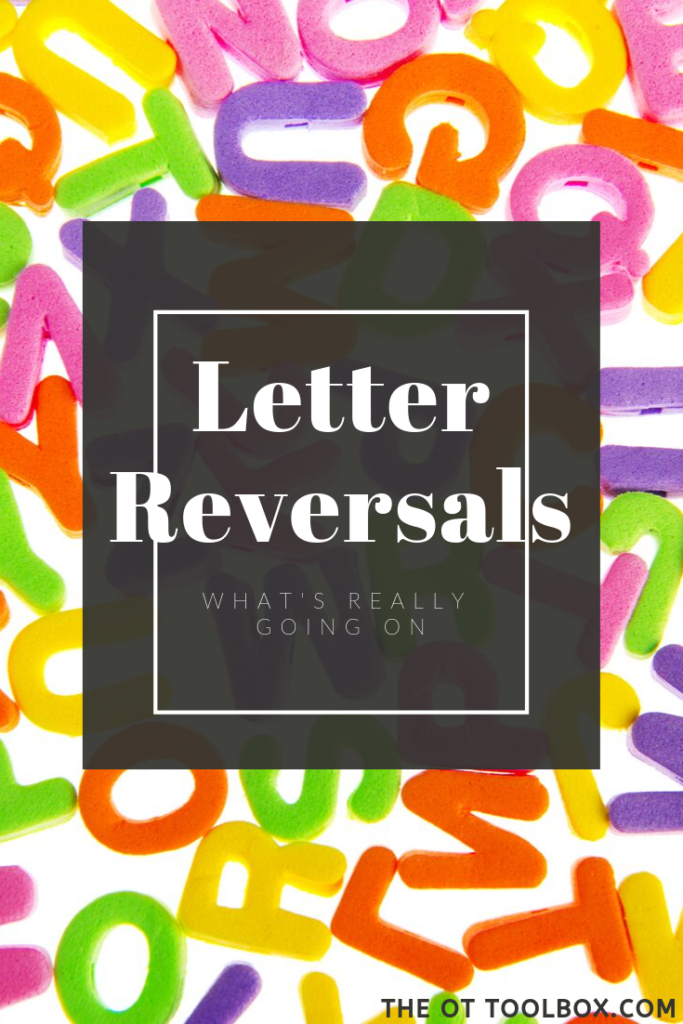

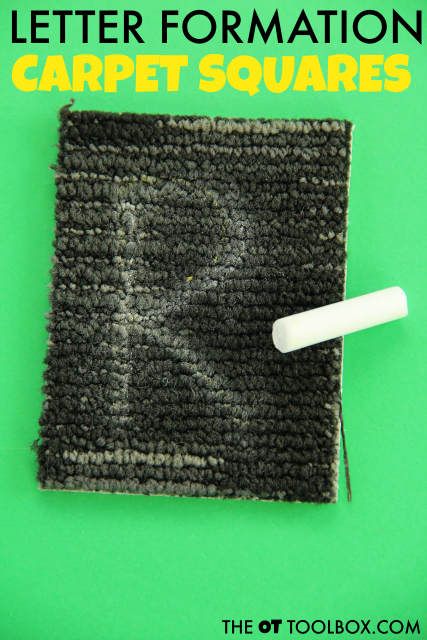

This massive resource on letter formation covers everything you need to know about the development of handwriting skills, including why you should teach upper case letters first in handwriting instruction, why proper formation is important, and why letters should start at the top. You’ll also gain access to a free letter formation worksheets designed to promote handwriting skills.
Then head to this article on Lower Case Letter Formation for specific strategies related to writing lowercase letters.
Next, read this resource on letter reversals and discover strategies to help with writing letters backwards, and the development of letter reversals, including when letter reversals are normal for new writers.
Try these motor planning in handwriting activities including a carpet square activity to use the benefits of resistive writing surfaces in helping kids to learn to form letters.
Cursive Handwriting Activities
Cursive handwriting is a form of written work that works well for many students, especially those who struggle with pencil control, fine motor skills, and the formation of letters. Cursive letters are much smoother and have a natural flow. Use the handwriting activities below to work on learning cursive writing.
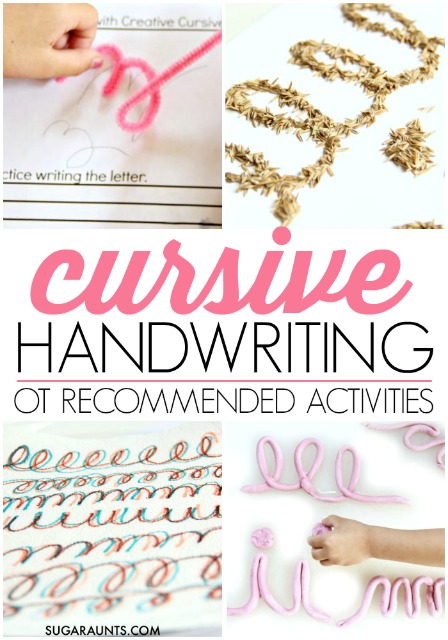

Try these ideas for teaching cursive handwriting. These are the best creative cursive activities that we’ve done here on the blog. Be sure to stop back for more ideas.
Check them out by clicking on the links below for tips and ways to work on letter formation with smooth cursive letter lines, loops, re-tracing, and connectors. Here is information on the research on cursive writing.
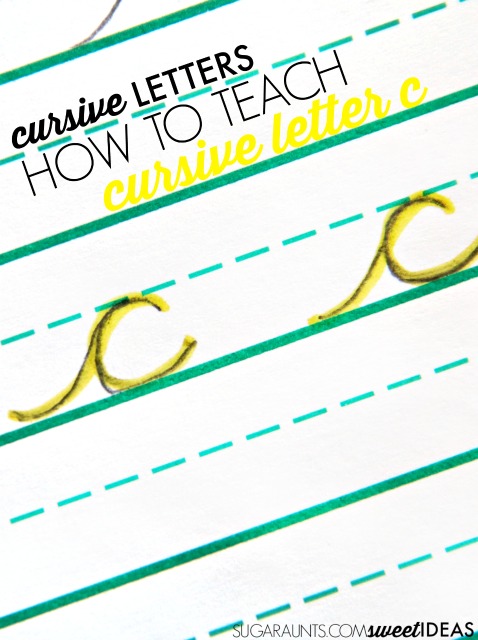

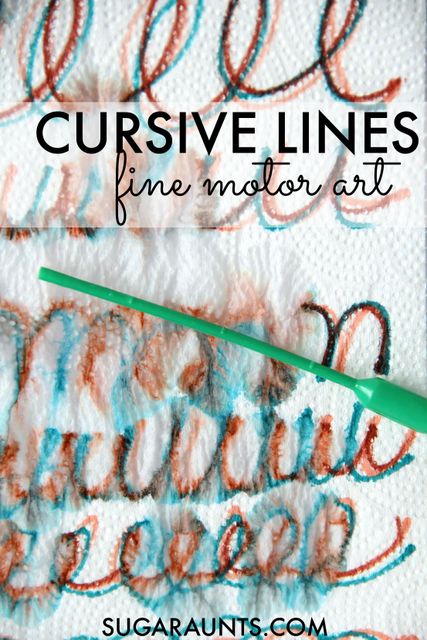

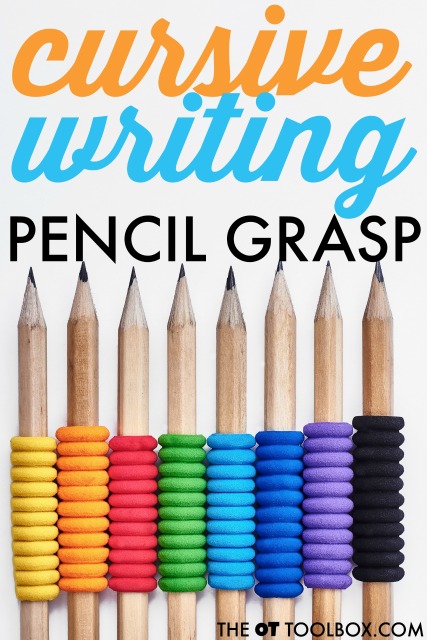

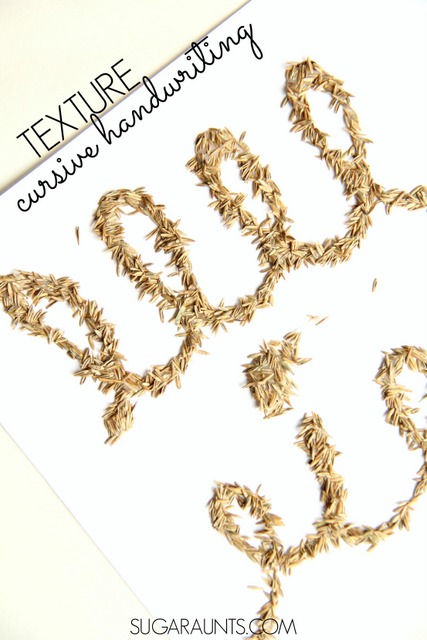

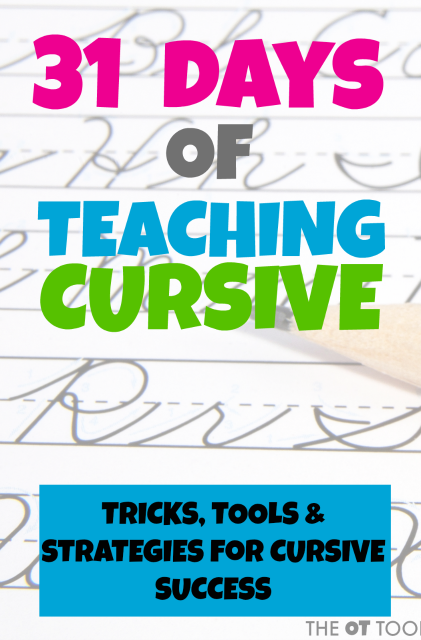

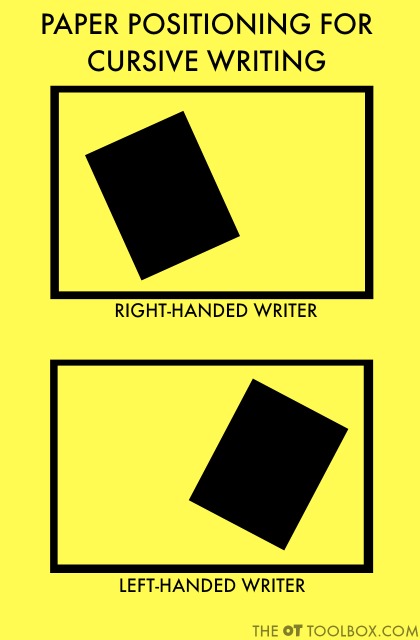

How to Teach Letter “c” in Cursive– Teaching cursive letter c is a building block for forming other cursive letters based on the motor plan to turn the cursive c into other letters including: cursive a, d, g, o, and q.
Textured Cursive Lines– Cursive letters flow and these handwriting activities use textured lines to build a motor plan for combining cursive letters. This is a fun multisensory writing activity.
Holding the Paper in Cursive Writing– Positioning the paper is essential for cursive writing slant and formation. This resource covers paper positioning for lefties and righties.
Cursive Pencil Grasp– Does cursive require a different pencil grasp? No…but cursive writing requires new and different pencil movements which can impact pencil grasp! Read more to find out what I mean.
Cursive Lines Art– Use art to work on cursive letter lines.
31 Days of Cursive– Use this resource and activity list for fun and hands-on approaches to teaching cursive handwriting.
Cursive Handwriting Journal– Print this cursive handwriting journal to work on letter formation of cursive letters using multi sensory writing with several different textured writing activities.
Fizzy Dough Cursive Letters– Textured sensory writing is fun with this play dough letters. These cursive letters are sensory and fun! This activity uses the sense of touch with tactile exploratory input with fizzy, sensory letter formation.
Sensory Processing and Handwriting
Getting the senses involved in handwriting can be so beneficial to learning the motor plan of letter formation. Try these sensory ideas for improved handwriting using all of the senses.
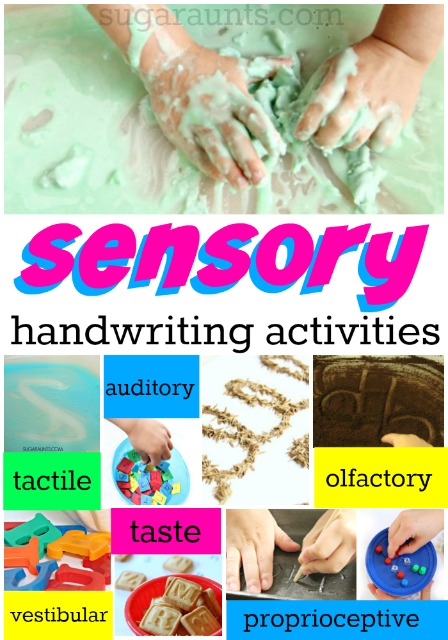

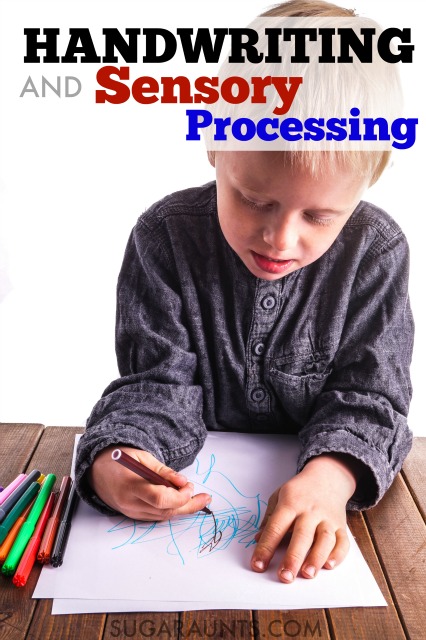

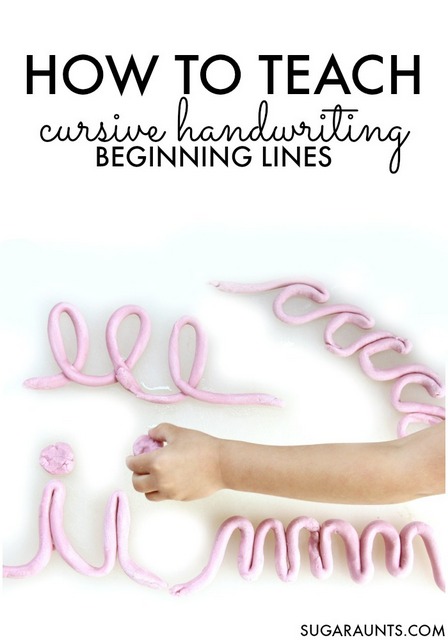

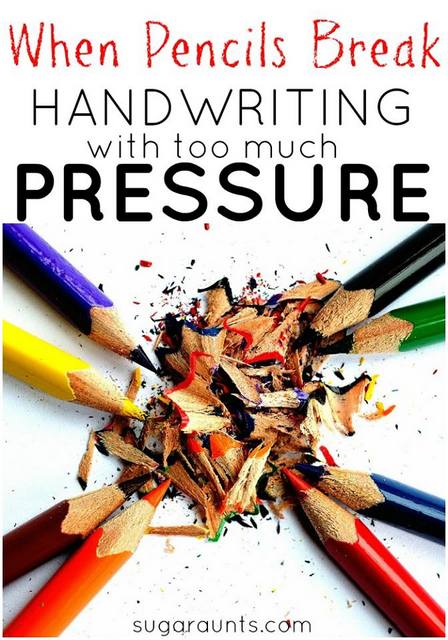

Sensory Processing and Handwriting– This informative resource covers all things sensory and handwriting. There are many aspects to handwriting that incorporate the senses.
Cursive Letter Fizzy Dough– Make baking soda dough, add the vinegar and watch those letters FIZZ and pop! This is a great activity for building fine motor skills and letter formation!
Pressing Too Hard When Writing Proprioception Tips is the perfect post if you are looking for tips on writing with too much (or too little) pencil pressure.



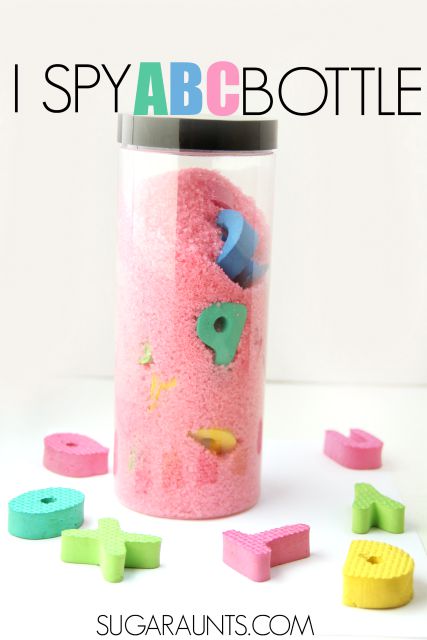

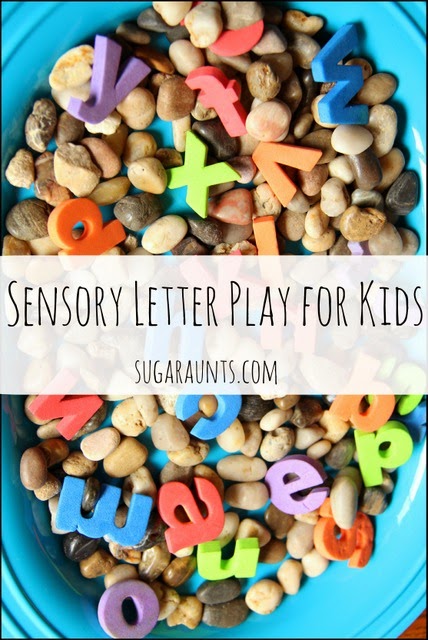

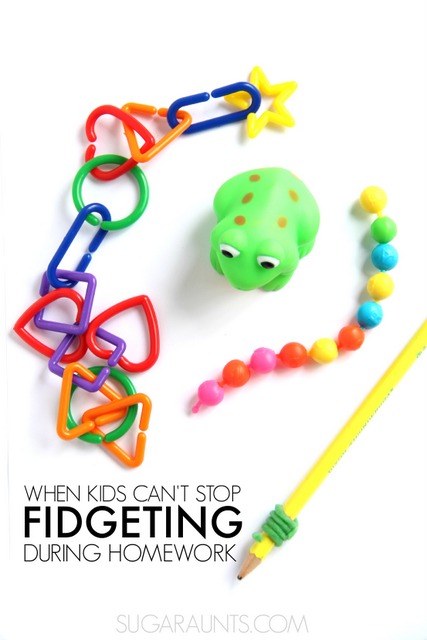

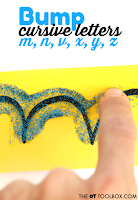

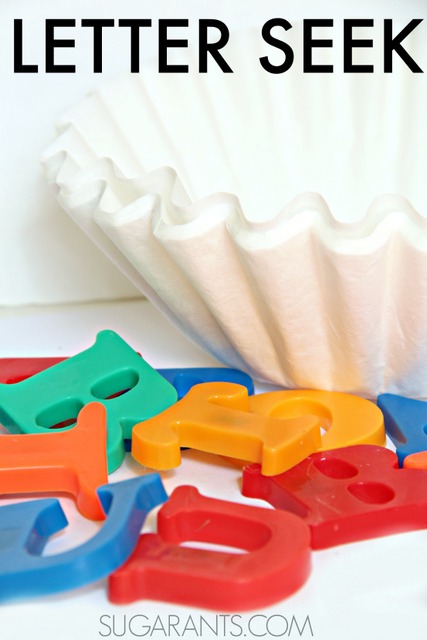

Sensory Letter Formation Work on letter formation using dish soap in this tactile and olfactory letter learning and writing activity.
Sensory Bottle with Letters– You can use whatever materials you have available to make a sensory bottle for self-regulation AND letter identification and handwriting, too.
Glitter Glue Tracing Letters– This cursive writing activity can be done with printed letters too. Use glitter glue for a tactile experience that builds a motor plan and muscle memory for letter formation.
Sensory Letter Bin– Make a sensory bin using materials you have in the home…then add letters for a handwriting experience kids won’t forget!
- Fidget tips and tools can be used for kids who are constantly fidgeting during writing activities.
- Handwriting on Foam Craft Sticks and letters and coffee filters use the auditory sense when writing. Whisper, tell, yell, rhyme, or sing the letters as your child writes them.
- Letter cookies are a tasty way to practice letter formation.
- Pencil Control Worksheets You Can Make At Home uses the sense of sight with bright and high-contrast lines for working on line awareness, pencil control, and motor planning when writing.
- Tracing Letters: Letter Formation Handwriting Practice with Chalk uses the proprioceptive and tactile senses to write with chalk on a bumpy and hard sidewalk. Up the textures by using wet chalk!
- High-Contrast Letter Formation is one of my favorites from this blog! Use a black material (do you know what we used?) on a white surface for high visual contrast with an olfactory power punch!
- Handwriting No-Mess Sensory addresses the proprioceptive sense to form letters.
- Christmas-Themed Pencil Control Activities-DIY Worksheets for Pencil Control uses a DIY light table for sensory handwriting activities.
- Tracing Lines with a DIY Light Box Practice handwriting with visual input of a DIY light table.
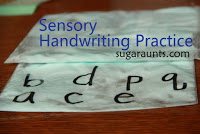

Tripod Grasp Activities for Kids
- Improving Pencil Grasp With Fine Motor Play Activities
- Fine Motor Coordination with a Cereal Box (activity to improve tripod grasp)
- Gift Guide: Toys to Improve Pencil Grasp
- Line Awareness with Beads (A pre-handwriting activity)
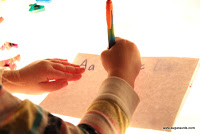

Spacing activities in handwriting
Try these DIY Spacing tool crafts. Kids can make them and feel proud to use them in handwriting:
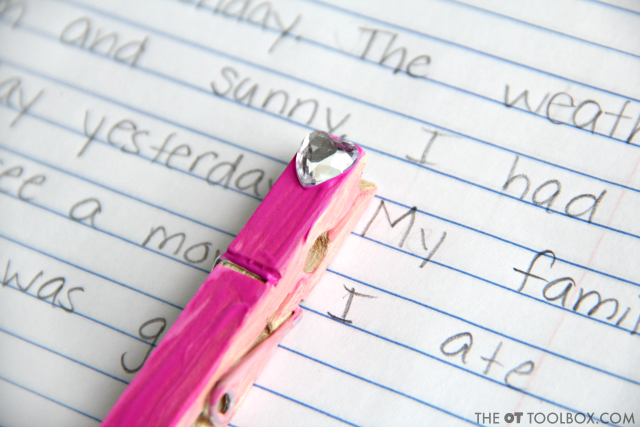

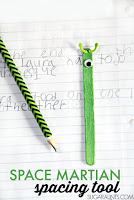

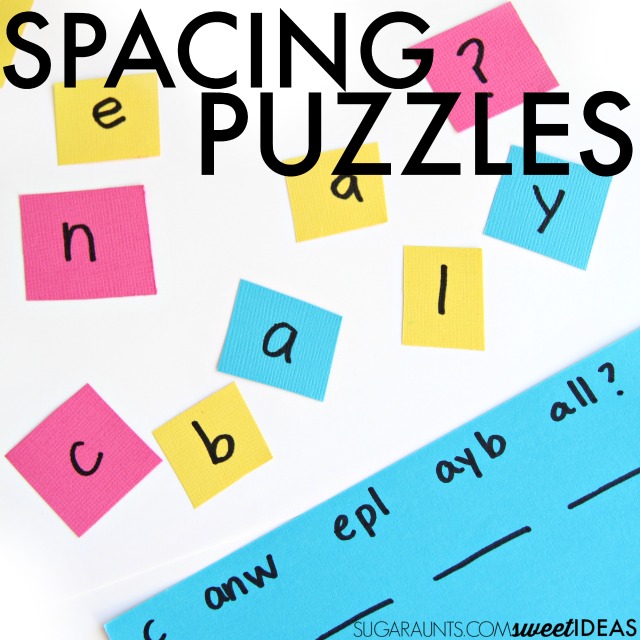

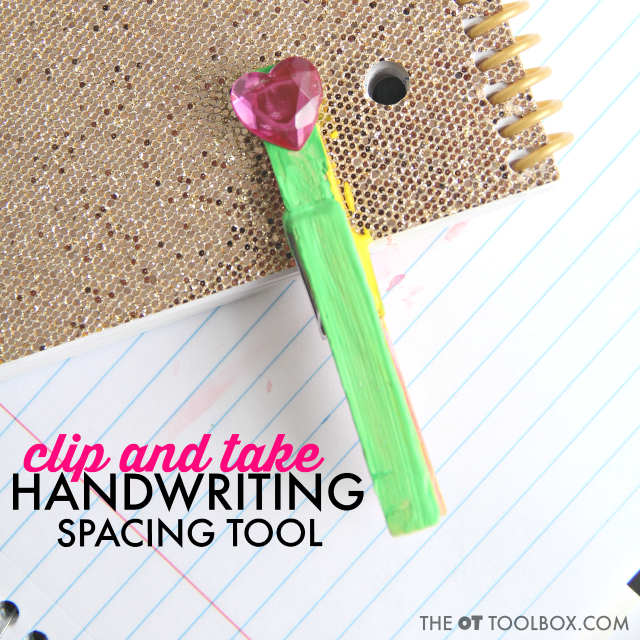

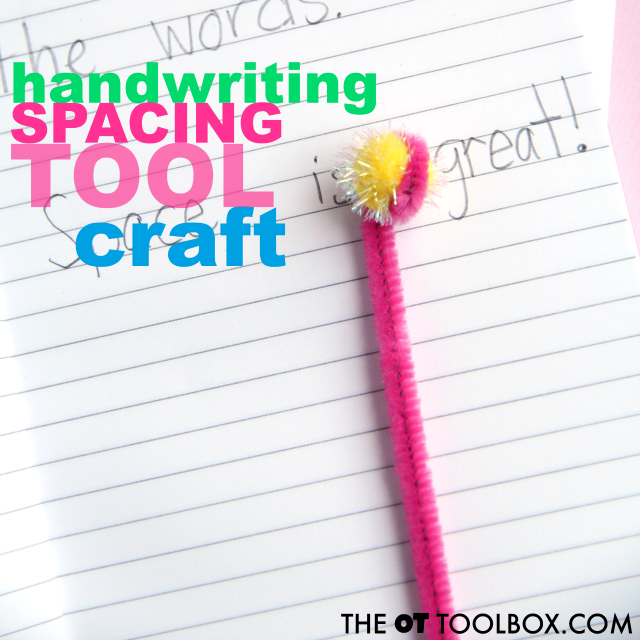



- Pipe Cleaner Spacing Tool
- Craft stick and Button Spacing Tool
- Clothes Pin Spacing Tool
- Space Martian Spacing Tool
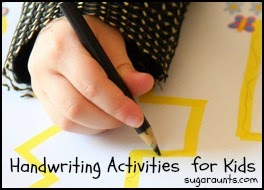

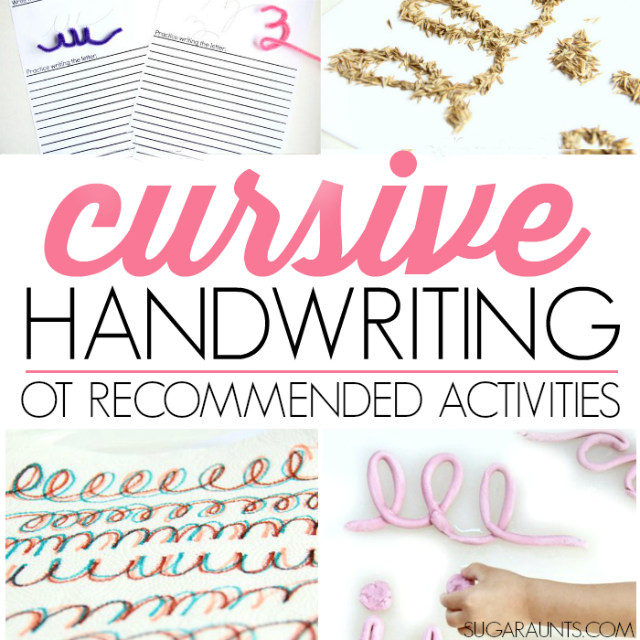

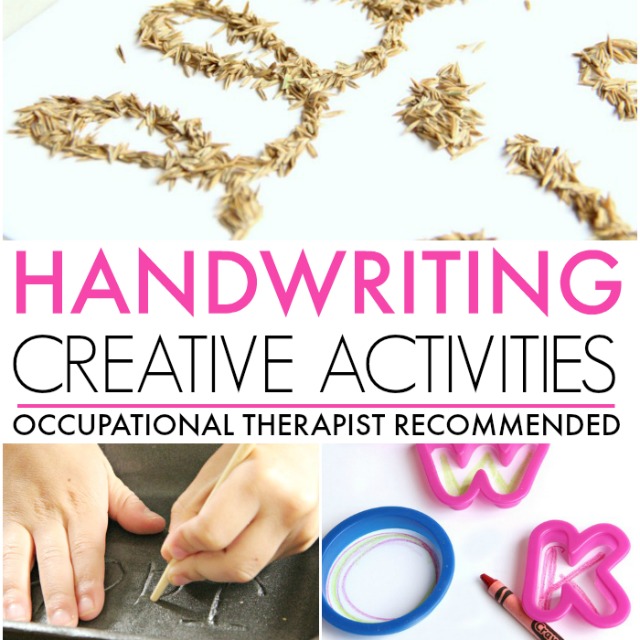

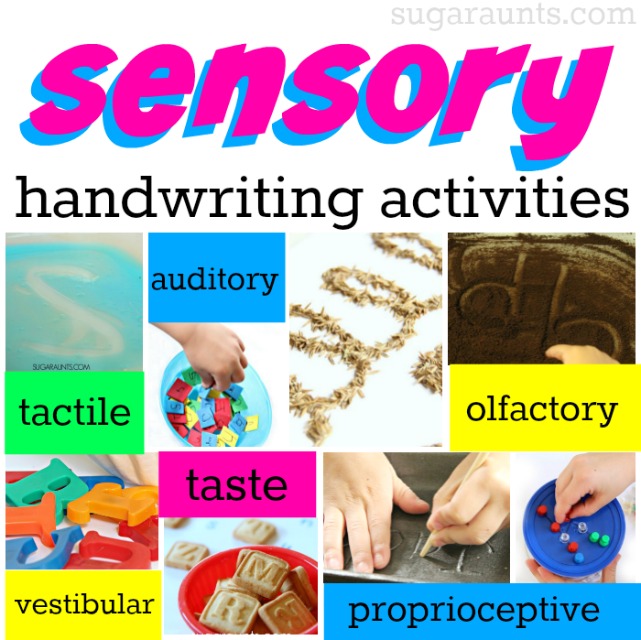

Free Handout: Activities to Improve Handwriting
Want to develop handwriting skills and need specific activities designed to support the progression of underlying skills?
Grab a copy of our free handwriting handout: Motor Activities to Improve Handwriting! Use this handout to educate parents, teachers, and other therapists about underlying skill areas needed for handwriting. Go through the handouts and select the activities that will support the individual you are working with and address handwriting skills through specific therapeutic play tasks and occupational therapy activities.
This handout is also available as a resource in The OT Toolbox Member’s Club. Members can access the printable handout by logging in and then heading to our Educational Handouts section. There, members can click on the button and immediately access the handwriting handout without entering their email address. Grab this resource along with hundreds of other materials and therapy support tools.


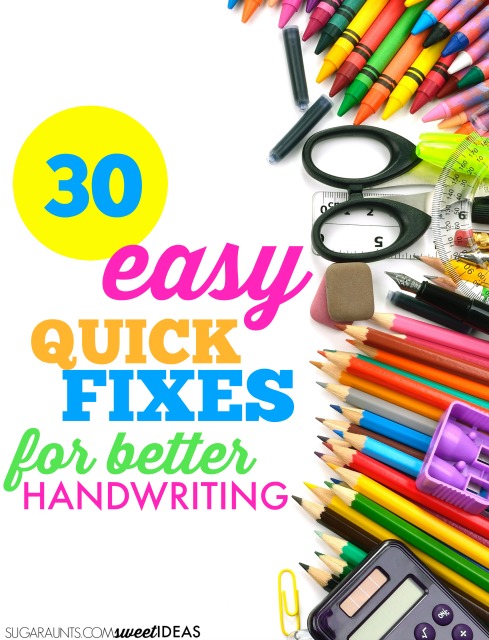

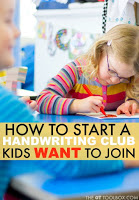
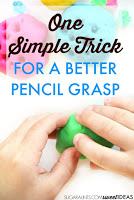
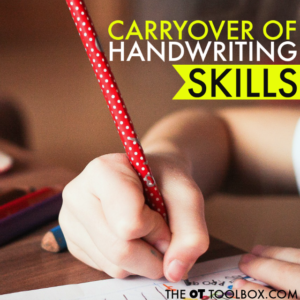
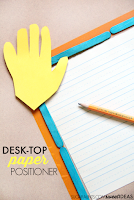



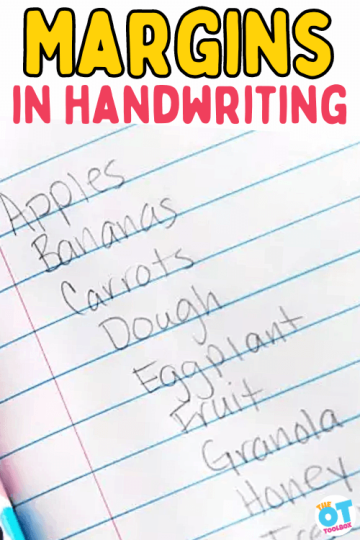
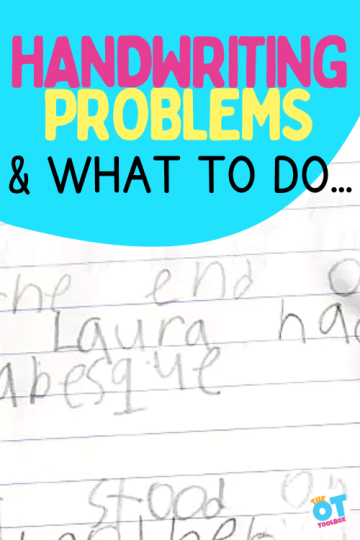
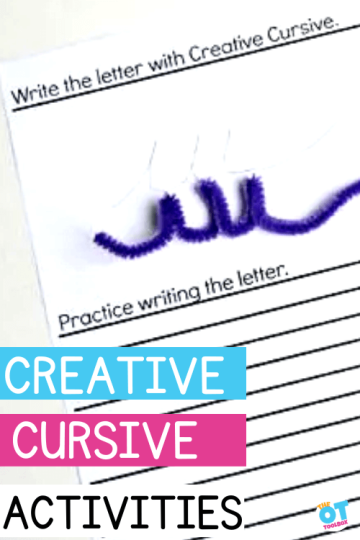
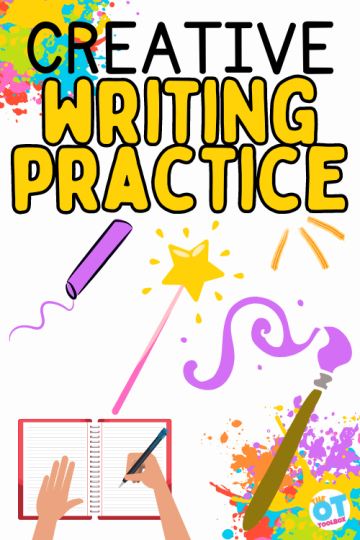
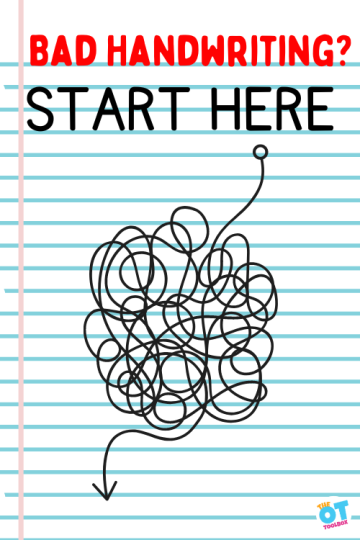
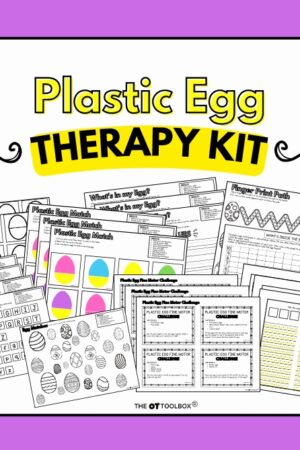
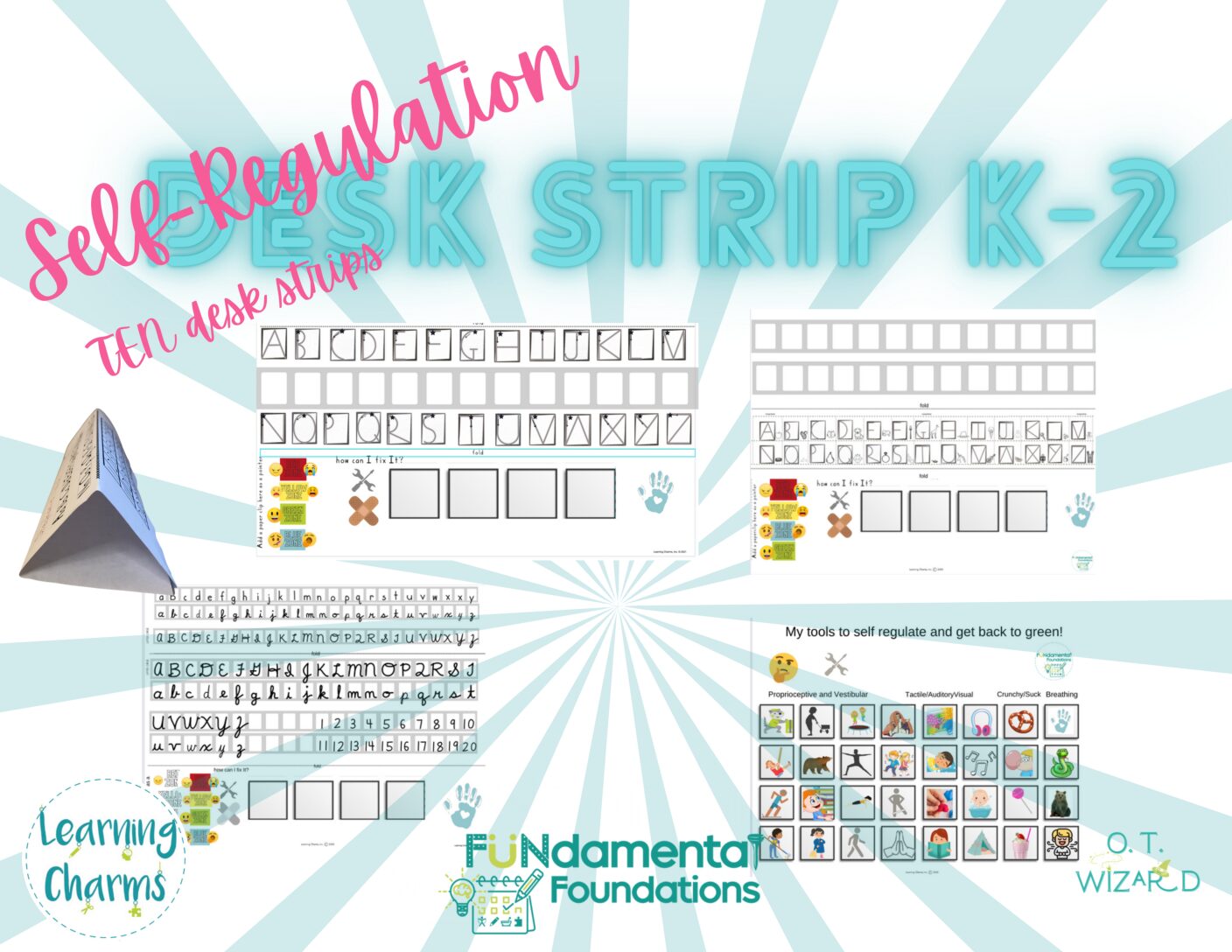
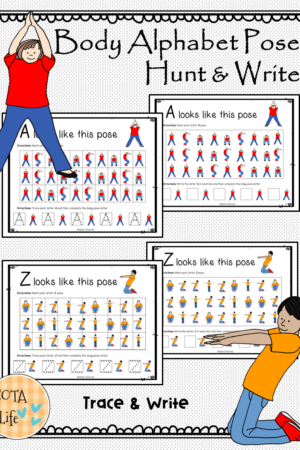
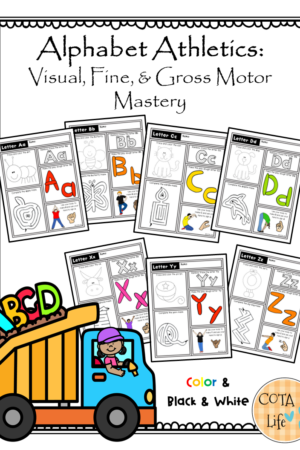


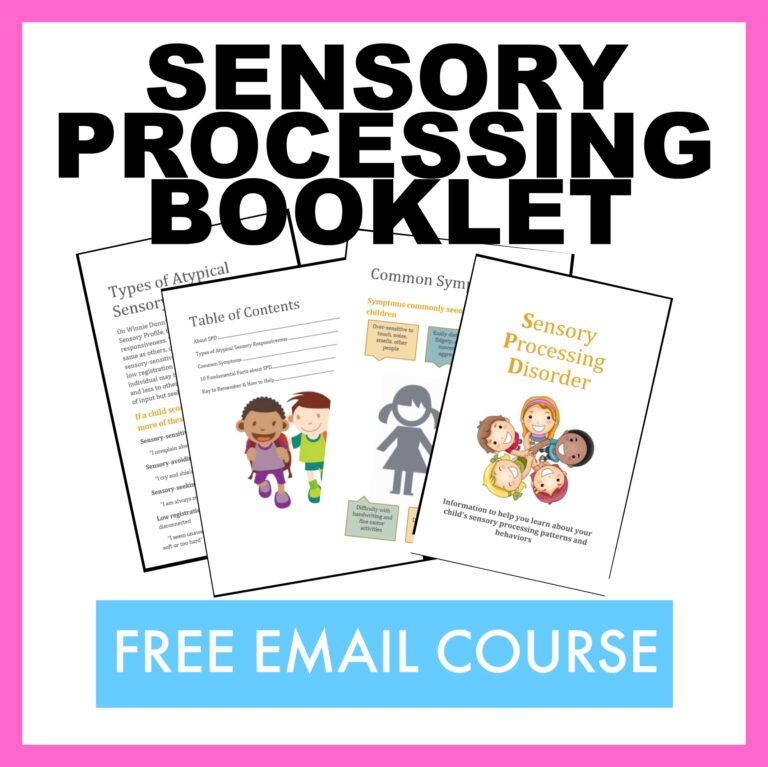


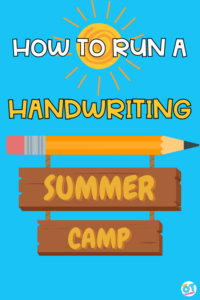
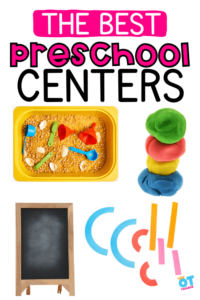
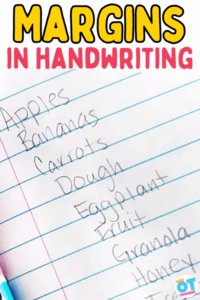

What a awesome page you have. thank you for so many wonderful ideas to share with the little one. God bless.
Thanks so much! We're having fun doing all of these activities with our kids and happy to share!
am working with my small grandchildren and these are awesome ideas we'll be using soon! <3
thanks you for sharing
We dropped ping pong ball (can find ones with eye balls at Halloween @ dollar store) onto egg cartons.. I buy 5 dozen at a time so they have a larger area. They stand on a chair and drop them over the back side. have fun!